1. Overview
Malaysia is a federal constitutional monarchy located in Southeast Asia. It consists of thirteen states and three federal territories, geographically separated by the South China Sea into two main regions: Peninsular Malaysia (West Malaysia) and East Malaysia (Malaysian Borneo). Peninsular Malaysia shares a land border with Thailand to the north and maritime borders with Singapore to the south, Vietnam to the northeast, and Indonesia to the west. East Malaysia, on the island of Borneo, shares land borders with Brunei and Indonesia, and maritime borders with the Philippines and Vietnam. The country's capital is Kuala Lumpur, which is also its largest city and the seat of the legislative branch. The federal administrative capital is Putrajaya, home to the executive and judicial branches. With a population exceeding 34 million, Malaysia is a multicultural and multiethnic nation. The majority of the population is ethnically Malay, with significant minorities of Chinese and Indians, alongside diverse indigenous groups, particularly in East Malaysia. Islam is the official religion, but the constitution guarantees freedom of religion for non-Muslims. The official language is Malaysian Malay, with English widely used as a second language.
Historically, the region was home to various Malay kingdoms influenced by Indian and Chinese trade and culture. European colonial powers, primarily the British, began establishing control in the 18th century, leading to the formation of British Malaya. Following Japanese occupation during World War II, nationalist sentiments grew, culminating in the independence of the Federation of Malaya in 1957. In 1963, Malaya united with North Borneo (now Sabah), Sarawak, and Singapore to form Malaysia; Singapore later separated in 1965. Post-independence, Malaysia's politics have been significantly shaped by its ethnic composition, leading to policies like the New Economic Policy (NEP) aimed at addressing socio-economic disparities, particularly benefiting the Bumiputera (Malays and other indigenous peoples). While this policy contributed to the rise of a Malay middle class, its impact on social equity and inter-ethnic relations remains a subject of debate, with concerns about its discriminatory aspects and its effectiveness in genuinely uplifting the most vulnerable.
Malaysia's government is modeled on the Westminster parliamentary system. The economy, once reliant on primary commodities like tin and rubber, has diversified into manufacturing, services, and tourism. Significant economic growth occurred, especially under Prime Minister Mahathir Mohamad, though this period also saw concerns regarding democratic space and human rights. Recent political history includes the 1MDB scandal, which led to a historic change in government in 2018, followed by further political crises. Issues of human rights, including freedom of expression, the rights of minorities (ethnic, religious, LGBT), the death penalty, and the treatment of migrant workers and refugees, are ongoing concerns actively discussed by civil society and international observers, reflecting the challenges in balancing development with democratic principles and social justice. The country's rich biodiversity faces threats from deforestation and development, prompting conservation efforts aimed at sustainable practices. Malaysia's foreign policy emphasizes neutrality and regional cooperation, particularly within ASEAN, while navigating complex geopolitical issues, including territorial disputes in the South China Sea.
2. Etymology
The name "Malaysia" is a combination of the word "Malays" and the Latin-Greek suffix "-ia"/"-ία", which can be translated as 'land of the Malays'. The term "Melayu" (Malay) itself is thought to have originated from various sources. One theory suggests it comes from the Sanskrit word "Malayadvipa", meaning "land of mountains," a term used by ancient Indian traders to refer to the Malay Peninsula. Another theory proposes a Tamil origin, from "malai" (mountain) and "ur" (city or land). The 7th-century Chinese monk Yijing's account also mentions "Malayu" in reference to a kingdom in Sumatra, likely Srivijaya or a related entity.
The term "Malaysia" in a broader geographical sense, referring to the Malay Archipelago, was proposed in the 19th century. French navigator Jules Dumont d'Urville, in 1831, suggested "Malaisia" (along with "Micronesia" and "Melanesia") to the Société de Géographie in Paris to distinguish the island groups of the Pacific. He described "Malaisia" as "an area commonly known as the East Indies." In 1850, English ethnologist George Samuel Windsor Earl, writing in the Journal of the Indian Archipelago and Eastern Asia, proposed naming the islands of Southeast Asia as "Melayunesia" or "Indunesia", favoring the former. The name Malaysia gained some usage to label what is now the Malay Archipelago.
Before European colonization, the Malay Peninsula was known indigenously as Tanah Melayu ('Malay Land'). The German scholar Johann Friedrich Blumenbach used the term "Malay race" in his racial classification system for the indigenous peoples of maritime Southeast Asia. The name "Federation of Malaya" was chosen for the entity that gained independence in 1957, in preference to other potential names like "Langkasuka" (an ancient kingdom in the northern Malay Peninsula) or "Malaysia" itself. The name "Malaysia" was officially adopted in 1963 when the Federation of Malaya united with Singapore, North Borneo (present-day Sabah), and Sarawak to form the new federation. One theory suggests the "si" in Malaysia was chosen to represent the inclusion of Singapore, North Borneo (Sabah), and Sarawak. Interestingly, politicians in the Philippines had also contemplated renaming their state "Malaysia" before the modern country adopted the name.
In Malay, the official name of the country as it appears on some official documents, including the oath of the Yang di-Pertuan Agong, is Persekutuan MalaysiaFederation of MalaysiaMalay. However, "Malaysia" is predominantly used officially, including in the Malaysia Agreement 1963 and the Federal Constitution.
3. History
The history of Malaysia is a complex tapestry woven from indigenous cultures, migrations, trade, colonial influences, and the formation of a modern nation-state. It encompasses ancient kingdoms, the rise of powerful sultanates, centuries of European colonial domination, the struggle for independence, and the challenges and achievements of a multi-ethnic, post-colonial nation. The narrative includes significant impacts on indigenous populations, the development of social structures, and evolving ethnic relations.
3.1. Prehistory and Early Kingdoms
Evidence of modern human habitation in Malaysia dates back approximately 40,000 years. The earliest inhabitants of the Malay Peninsula are believed to be the Negrito peoples. Archaeological findings, such as stone tools in Kota Tampan, Perak, and human skulls in Niah Caves, Sarawak, attest to early human presence. These early communities were likely hunter-gatherers. Around 2000 BC to 1000 AD, areas of Malaysia participated in the Maritime Jade Road, a prehistoric trade network.
By the first century AD, traders and settlers from India and China began arriving, establishing trading ports and coastal towns. This interaction led to significant Indian and Chinese cultural influences on the local populations, who adopted Hinduism and Buddhism. Sanskrit inscriptions dating as early as the fourth or fifth century have been found. Several early kingdoms emerged, including the kingdom of Langkasuka in the northern Malay Peninsula around the second century AD, which lasted until about the 15th century. Other notable early riverine and coastal states included Kedaram (ancient Kedah), Beruas, and Gangga Negara in Perak, and Pan Pan in Kelantan. These early states were often part of larger regional networks and empires. Between the 7th and 13th centuries, much of the southern Malay Peninsula was under the influence or direct control of the maritime Srivijayan empire, based in Sumatra. Following Srivijaya's decline, the Majapahit empire, based in Java, extended its influence over most of the peninsula and the Malay Archipelago. The arrival and establishment of these early kingdoms and their interactions with larger empires undoubtedly impacted the indigenous populations, often leading to displacement, assimilation, or changes in their traditional ways of life.
3.2. Malacca Sultanate

In the early 15th century, Parameswara, a prince believed to be from Palembang and linked to the old Srivijayan court, founded the Malacca Sultanate. Fleeing from Majapahit attacks, he initially sought refuge in Temasek (present-day Singapore) before establishing a new settlement at the mouth of the Bertam River, which grew into the city of Malacca. According to the Malay Annals (Sejarah Melayu), Parameswara was inspired to found the city after witnessing a mousedeer outwit a hunting dog under a Melaka tree, taking it as a good omen.
The Malacca Sultanate rapidly rose to prominence as a major international trading emporium. Its strategic location along the Strait of Malacca, a key maritime route between India and China, attracted traders from across Asia, including Arabs, Persians, Indians, Chinese, and Southeast Asians. Malacca became a vital hub for the spice trade and other valuable commodities.
The reign of Parameswara and his successors saw the consolidation of power and the expansion of Malacca's influence. A significant development during this period was the conversion of Parameswara (who later took the title Iskandar Shah) to Islam, likely influenced by his marriage to a princess from Pasai or through interactions with Muslim traders. The adoption of Islam by the Malaccan court led to its spread throughout the Malay Peninsula and the wider Malay Archipelago, with Malacca becoming a key center for Islamic learning and dissemination in the region. The Sultanate developed a sophisticated administrative system and a code of laws, such as the Hukum Kanun Melaka (Laws of Malacca) and the Undang-Undang Laut Melaka (Maritime Laws of Malacca).
Key rulers following Parameswara, such as Sultan Muzaffar Shah, Sultan Mansur Shah, and Sultan Alauddin Riayat Shah, further expanded Malacca's territory and influence, which at its peak extended over much of the Malay Peninsula and parts of Sumatra. The prosperity and cosmopolitan nature of Malacca during this era are well-documented in historical accounts. However, its dominance came to an end in 1511 when it was conquered by a Portuguese fleet led by Afonso de Albuquerque.
3.3. European Colonial Rule
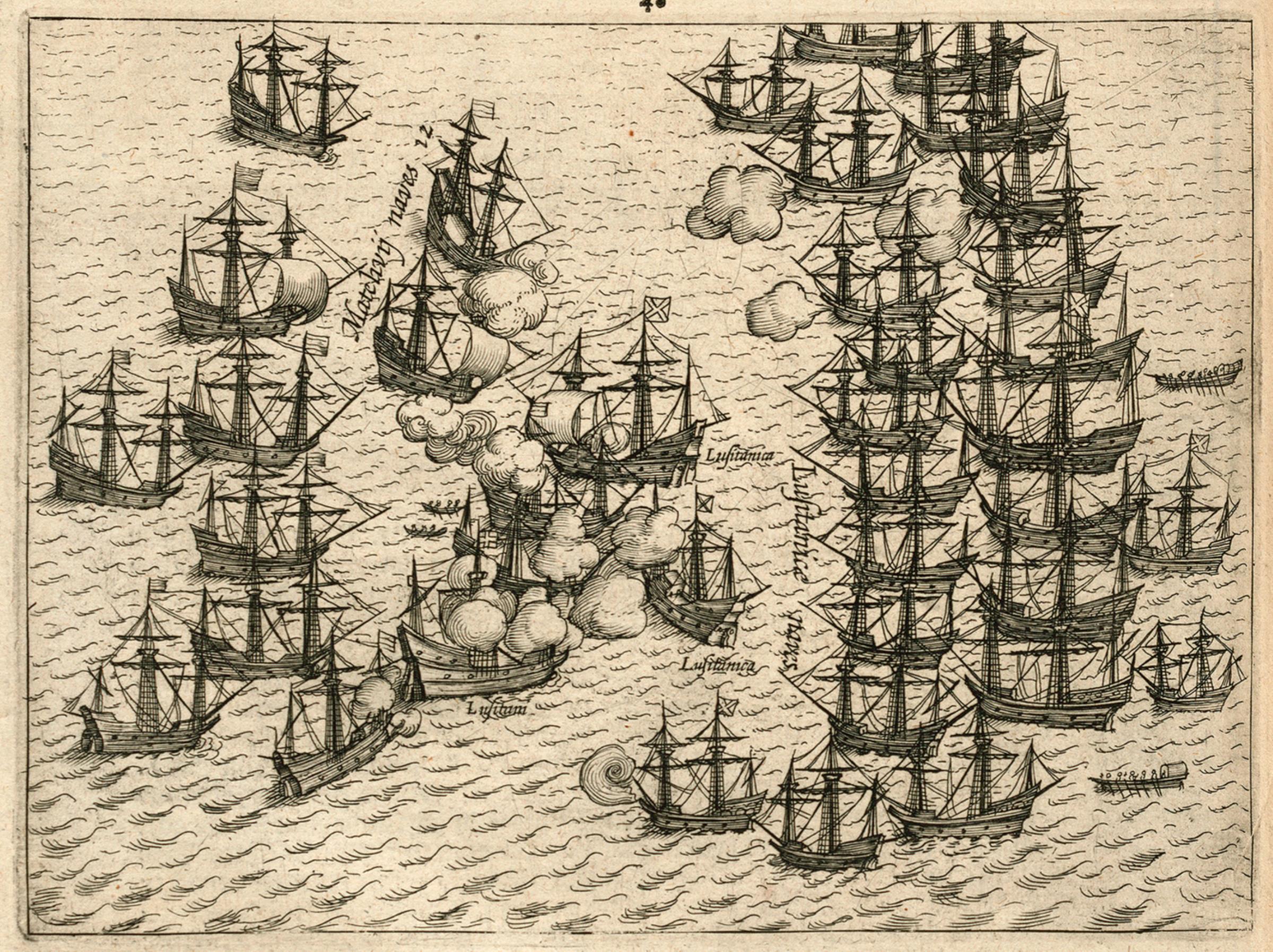
European colonial intervention in the Malay region began with the Portuguese conquest of the Malacca Sultanate in 1511. Malacca became a strategic Portuguese outpost for controlling the spice trade. However, Portuguese influence was largely confined to Malacca itself, facing challenges from other regional powers like the Johor Sultanate (successor to Malacca) and Aceh. The Portuguese presence lasted for over a century until 1641 when Malacca was captured by the Dutch, who were allied with Johor. Dutch Malacca then became part of the Dutch colonial network, though its prominence as a trade center declined relative to other Dutch-controlled ports like Batavia (Jakarta).
British involvement in the Malay Peninsula began in the late 18th century. In 1786, the British East India Company acquired Penang Island from the Sultan of Kedah, establishing George Town as a trading post. In 1819, Stamford Raffles founded Singapore for the British, which rapidly grew into a major port. Following the Anglo-Dutch Treaty of 1824, which demarcated British and Dutch spheres of influence in the archipelago, Malacca was transferred to British control in exchange for Bencoolen (Bengkulu) in Sumatra. In 1826, Penang, Malacca, and Singapore were consolidated into the Straits Settlements, a Crown Colony directly administered by Britain. Labuan Island was added to the Straits Settlements later.
Throughout the 19th century, British influence extended into the Malay states of the peninsula. Internal conflicts within these states and the lucrative tin mining industry attracted British intervention. Through a series of treaties, beginning with the Pangkor Treaty of 1874 with Perak, the British installed Residents or Advisors in several states. Perak, Selangor, Negeri Sembilan, and Pahang became the Federated Malay States (FMS) in 1895, with a centralized British administration under a Resident-General in Kuala Lumpur. While the Malay Sultans retained their sovereign titles, actual power increasingly rested with the British officials. The remaining five states - Johor, Kedah, Kelantan, Perlis, and Terengganu - became known as the Unfederated Malay States (UMS). They maintained greater autonomy but also accepted British advisors and came under British protection, largely through treaties in the early 20th century, such as the Anglo-Siamese Treaty of 1909 which transferred suzerainty over the northern states from Siam to Britain.
In Borneo, James Brooke, an English adventurer, was granted territory in Sarawak by the Sultan of Brunei in 1841 and established the Brooke dynasty of "White Rajahs", ruling Sarawak as a private kingdom until it became a British Crown Colony in 1946. North Borneo (present-day Sabah) came under the control of the British North Borneo Company in the late 19th century after cessions from the Sultans of Brunei and Sulu, and became a British protectorate, later a Crown Colony.
Colonial rule brought significant social and economic changes. The British developed infrastructure like railways and ports to support the extraction of resources, primarily tin and rubber. Large-scale immigration of Chinese and Indian laborers was encouraged to work in the mines and plantations. This led to the formation of a multi-ethnic society but also laid the groundwork for future ethnic tensions. The economic policies were primarily geared towards benefiting the colonial power, and indigenous populations often found themselves marginalized or their traditional livelihoods disrupted. While some elites benefited from collaboration, the broader social and economic impact on the local populace was complex, often involving exploitation and the imposition of foreign systems of governance and law, which had profound and lasting effects on Malaysian society.
3.4. World War II and Japanese Occupation
During World War II, the Malay Peninsula and British Borneo became a key theater of conflict in Southeast Asia. On December 8, 1941, shortly after the attack on Pearl Harbor, the Imperial Japanese Army launched its invasion of Malaya, landing at Kota Bharu. British, Australian, and Indian forces stationed in Malaya were ill-prepared and quickly overwhelmed by the Japanese advance down the peninsula. Singapore, considered a British fortress, fell to the Japanese on February 15, 1942. North Borneo and Sarawak were also occupied by Japanese forces.
The Japanese occupation lasted for over three years, until Japan's surrender in August 1945. This period was marked by significant hardship for the local population. The Japanese administration was often brutal, particularly towards the Chinese community, who were targeted due to the ongoing Second Sino-Japanese War. Shortages of food and essential goods were common, leading to widespread suffering. The occupation also disrupted the colonial economy, which was reoriented to serve Japan's war effort.
The Japanese occupation had a profound impact on ethnic relations and the growth of nationalism in Malaya. The Japanese policy of favoring Malays and Indians over the Chinese in some administrative roles exacerbated existing ethnic tensions. However, the defeat of the British, a major European colonial power, by an Asian power shattered the myth of European invincibility and fueled aspirations for independence among various local groups. Resistance movements emerged, including the predominantly Chinese Malayan Peoples' Anti-Japanese Army (MPAJA), which was aligned with the Malayan Communist Party (MCP). The experience of the occupation and the subsequent struggle for liberation played a crucial role in shaping the post-war political landscape and the push towards self-governance and independence. The shared suffering under occupation also, in some instances, fostered a sense of common Malayan identity, although ethnic divisions remained significant.
3.5. Path to Independence
Following the end of World War II and the Japanese surrender in 1945, British colonial rule was restored in Malaya. However, the war had significantly weakened British prestige and fueled nationalist sentiments across the region. The British initially proposed the Malayan Union in 1946, a plan to unify all the Malay states on the peninsula (excluding Singapore) into a single Crown Colony with equal citizenship rights for all races. This proposal met with strong opposition from the Malay community, led by figures like Onn Jaafar and the newly formed United Malays National Organisation (UMNO). They feared the erosion of the Malay Rulers' sovereignty and the potential loss of Malay special rights. The widespread protests forced the British to abandon the Malayan Union.
In its place, the Federation of Malaya was established on February 1, 1948. This new arrangement restored the positions of the Malay Rulers and provided more safeguards for Malay special status, while still maintaining British oversight. Singapore remained a separate Crown Colony.
The post-war period was also marked by the Malayan Emergency (1948-1960), an armed insurgency launched by the Malayan Communist Party (MCP), whose members were predominantly Chinese. The MCP sought to establish a communist state in Malaya. The British, with Commonwealth forces (including troops from Australia and New Zealand), responded with a protracted counter-insurgency campaign. This conflict involved guerrilla warfare, resettlement of rural populations (primarily Chinese squatters into "New Villages" to deny support to the communists), and significant military and intelligence operations. The Emergency further complicated ethnic relations but also spurred the British to accelerate the move towards self-government as a means to counter communist appeal.
The independence movement gained momentum throughout the 1950s. Key political parties emerged, representing different ethnic communities, notably UMNO (Malays), the Malaysian Chinese Association (MCA), and the Malaysian Indian Congress (MIC). These three parties formed the Alliance Party, a multi-ethnic coalition led by Tunku Abdul Rahman of UMNO. The Alliance advocated for a negotiated path to independence. In 1955, the Federation held its first federal elections, which the Alliance Party won decisively. This victory paved the way for negotiations with the British government.
On August 31, 1957, the Federation of Malaya achieved independence (Merdeka) within the Commonwealth of Nations. Tunku Abdul Rahman became the first Prime Minister. The independence was achieved peacefully through constitutional means, but the legacy of colonial ethnic stratification and the recent Emergency left significant challenges for the newly independent nation, particularly concerning national unity and socio-economic disparities. The rights of minorities and the definition of national identity were central issues in the newly independent federation.
3.6. Formation of Malaysia and Early Challenges
Following the independence of the Federation of Malaya in 1957, discussions began about a larger federation that would include Malaya, Singapore, and the British Borneo territories of North Borneo (later Sabah), Sarawak, and Brunei. The proposal, championed by Malayan Prime Minister Tunku Abdul Rahman, aimed to create a more politically and economically stable entity, and also to counterbalance the ethnic Chinese majority in Singapore by incorporating the indigenous populations of Borneo.
After negotiations and a UN-ascertainment mission (the Cobbold Commission) to gauge public opinion in Borneo, the Federation of Malaysia was officially formed on September 16, 1963. It comprised the Federation of Malaya, Singapore, Sabah, and Sarawak. Brunei, which had initially shown interest, opted out due to disagreements over the Sultan's status and oil revenues.
The formation of Malaysia was met with immediate external challenges. Indonesia, under President Sukarno, launched a policy of "Konfrontasi" (Confrontation), viewing Malaysia as a neo-colonial creation of the British and a threat to Indonesian interests. This involved military incursions into Borneo, commando raids on Peninsular Malaysia, and diplomatic hostility. The Confrontation lasted until 1966 when relations were normalized after a change in Indonesian leadership. The Philippines also had a territorial claim over North Borneo (Sabah), which added to regional tensions.
Internally, the new federation faced significant challenges, particularly concerning ethnic relations and the integration of Singapore. Singapore, with its predominantly Chinese population and dynamic leader Lee Kuan Yew, had different political and economic priorities from the federal government in Kuala Lumpur, which was dominated by Malay political interests. Tensions arose over issues of economic policy, language, education, and the political influence of Singapore within the federation. Lee Kuan Yew's People's Action Party (PAP) advocated for a "Malaysian Malaysia," emphasizing equal rights for all races, which was seen as a challenge to the Malay-centric policies of the federal government.
These tensions culminated in Singapore's separation from Malaysia on August 9, 1965. The separation was mutually agreed upon by both governments as a way to resolve irreconcilable differences, though it was a painful and emotional event for leaders on both sides.
Within Malaysia, ethnic tensions persisted. The most significant early internal crisis was the 13 May 1969 race riots in Kuala Lumpur. These riots, primarily between Malays and Chinese, erupted after the general election of that year, which saw opposition parties (largely supported by non-Malays) make significant gains. The riots resulted in numerous deaths and extensive property damage, leading to the declaration of a state of emergency and the suspension of Parliament. This event had a profound impact on Malaysian politics and society, highlighting the fragility of inter-ethnic harmony and leading to major policy shifts aimed at addressing ethnic imbalances. The incident underscored the challenges of nation-building in a multi-ethnic society and the deep-seated socio-economic disparities that fueled communal unrest.
3.7. Modern Malaysia
Following the 13 May 1969 race riots, Malaysian politics and society underwent significant transformations. The government, under Prime Minister Tun Abdul Razak, implemented the New Economic Policy (NEP) in 1971. The NEP had two main objectives: to eradicate poverty irrespective of race and to restructure society to eliminate the identification of race with economic function. In practice, this led to extensive affirmative action programs favoring the Bumiputera (Malays and other indigenous peoples) in areas such as education, employment, business ownership, and public sector jobs. The NEP aimed to increase Bumiputera participation in the modern economy and reduce socio-economic disparities. While it contributed to the growth of a Malay middle class and reduced absolute poverty, the NEP also faced criticism for creating new forms of inequality, fostering a culture of dependency, and being implemented in ways that sometimes led to cronyism and inefficiency. Its impact on inter-ethnic relations was complex, sometimes viewed as divisive by non-Bumiputera communities who felt their opportunities were curtailed. The NEP officially ended in 1990 but was succeeded by similar policies like the National Development Policy (NDP) and later, the National Vision Policy (NVP), which continued to prioritize Bumiputera advancement.
Under the long premiership of Mahathir Mohamad (1981-2003), Malaysia experienced rapid economic growth and industrialization. His administration pursued ambitious development projects, including the Petronas Towers, the North-South Expressway, the Multimedia Super Corridor, and the new federal administrative capital of Putrajaya. This era, often associated with the "Look East Policy" (emulating Japan and South Korea), saw Malaysia transition from a commodity-based economy to one more reliant on manufacturing and exports, particularly electronics. However, Mahathir's tenure was also marked by a concentration of power in the executive, a weakening of judicial independence, and crackdowns on dissent, which raised concerns about democratic development and human rights. The Internal Security Act (ISA), allowing for detention without trial, was used against political opponents and activists.
The Asian financial crisis of 1997-98 severely impacted Malaysia. Mahathir controversially rejected IMF bailout packages and imposed capital controls, which were credited by some with helping Malaysia recover more quickly, though criticized by others. The post-Mahathir era saw Abdullah Ahmad Badawi (2003-2009) and then Najib Razak (2009-2018) as Prime Ministers. Najib's premiership was overshadowed by the 1MDB scandal, a massive financial fraud involving billions of dollars allegedly siphoned from a state investment fund, with funds traced to Najib's personal accounts. The scandal triggered widespread public anger and international investigations.
The 2018 general election resulted in a historic defeat for the Barisan Nasional (BN) coalition, which had ruled Malaysia since independence. The Pakatan Harapan (PH) coalition, led by a returning Mahathir Mohamad (who had allied with his former rival Anwar Ibrahim), came to power on a platform of reform and anti-corruption. However, this government was short-lived, collapsing in early 2020 due to internal defections, leading to a period of political instability known as the 2020-22 Malaysian political crisis. This crisis saw several changes in government, with Muhyiddin Yassin and then Ismail Sabri Yaakob becoming Prime Ministers. The COVID-19 pandemic further exacerbated economic and social challenges during this period.
The 2022 general election resulted in a hung parliament, with no single coalition securing a majority. Anwar Ibrahim eventually became Prime Minister, leading a unity government. Modern Malaysia continues to grapple with issues of democratic consolidation, ethnic and religious relations, economic equity, corruption, and the balance between development and environmental sustainability. Civil society remains active in advocating for human rights, good governance, and social justice, reflecting an ongoing evolution in the nation's political and social landscape.
4. Geography
Malaysia is located in Southeast Asia. The country consists of two main geographical regions: Peninsular Malaysia (or West Malaysia) and East Malaysia (or Malaysian Borneo). These two regions are separated by approximately 398 mile (640 km) of the South China Sea. Peninsular Malaysia occupies the southern part of the Malay Peninsula and shares a land border with Thailand to the north. To its south, it is connected to Singapore by a causeway and a bridge. Its western coast faces the Strait of Malacca, and its eastern coast faces the South China Sea. East Malaysia is situated on the northern part of the island of Borneo. It shares land borders with Indonesia (Kalimantan) to the south and Brunei to the north (Brunei is almost entirely enclaved within the Malaysian state of Sarawak). East Malaysia also has maritime borders with the Philippines and Vietnam. Tanjung Piai in the state of Johor is the southernmost point of continental Eurasia.
4.1. Topography
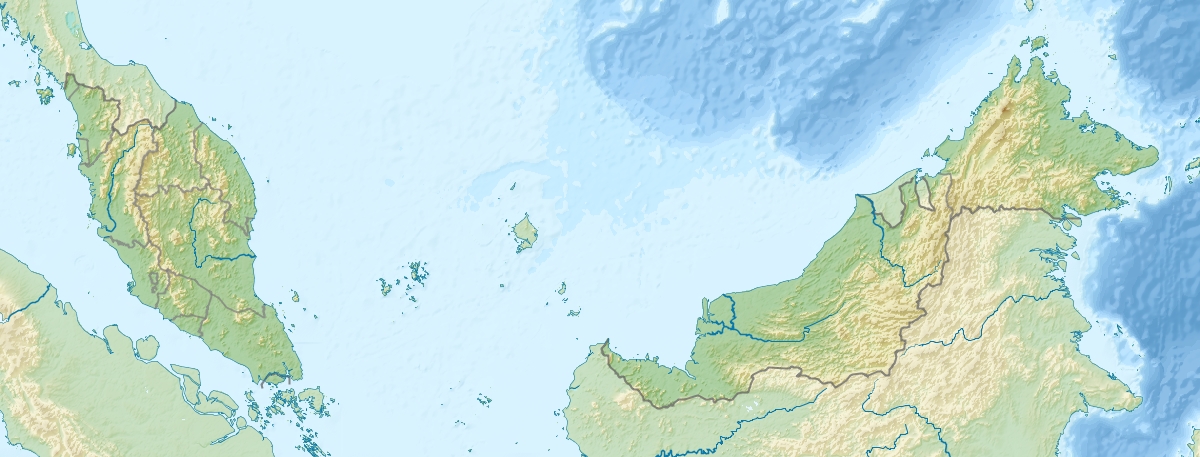
The topography of Malaysia is varied, featuring coastal plains, hills, and high mountain ranges.
Peninsular Malaysia is characterized by a central mountain range, the Titiwangsa Mountains (Banjaran Titiwangsa), which runs from north to south and effectively divides the peninsula into its eastern and western coastal regions. The highest peak in this range is Mount Korbu at 7.2 K ft (2.18 K m). Flanking these highlands are fertile coastal plains, which are wider on the western side of the peninsula where most of the population and agricultural activity are concentrated. Major rivers in Peninsular Malaysia include the Pahang River (the longest), the Perak River, and the Kelantan River. The coastline is extensive, with numerous islands, such as Penang, Langkawi, and the Perhentian Islands.
East Malaysia (Malaysian Borneo) is generally more rugged and mountainous than the peninsula. It is dominated by several mountain ranges, including the Crocker Range in Sabah, which is home to Mount Kinabalu, the highest peak in Malaysia and Southeast Asia, at 13 K ft (4.10 K m). Other significant ranges include the Trusmadi Range and the Witti Range in Sabah, and the Iran Mountains and Hose Mountains in Sarawak. East Malaysia also features extensive lowlands and river systems. The longest river in Malaysia, the Rajang River, is located in Sarawak, along with other major rivers like the Baram River and the Lupar River. Sabah's main rivers include the Kinabatangan River and the Padas River. The coastlines of Sabah and Sarawak are dotted with numerous islands, including Labuan, Sipadan, and the Tunku Abdul Rahman Park islands. Extensive cave systems, such as those in Gunung Mulu National Park (a UNESCO World Heritage site), are also a notable feature of Sarawak's topography.
4.2. Climate
Malaysia has an equatorial climate, characterized by high temperatures, high humidity, and abundant rainfall throughout the year. Its location near the equator means that there is little variation in daylight hours or temperature from month to month.
The average annual temperature in the lowlands is typically between 71.6 °F (22 °C) and 89.6 °F (32 °C), although temperatures can be significantly cooler in highland areas like the Cameron Highlands and Genting Highlands. Humidity is consistently high, usually ranging from 70% to 90%.
Rainfall is plentiful across the country, with annual averages often exceeding 0.1 K in (2.50 K mm). However, rainfall patterns are significantly influenced by the monsoon system. There are two main monsoon seasons:
1. The Southwest Monsoon, which typically occurs from late May to September. This monsoon brings moist air from the Indian Ocean, resulting in heavier rainfall on the west coast of Peninsular Malaysia and in Sabah.
2. The Northeast Monsoon, which usually lasts from November to March. This monsoon brings heavy rainfall, particularly to the east coast of Peninsular Malaysia and to Sarawak and Sabah. The east coast states of Kelantan, Terengganu, and Pahang, as well as parts of Borneo, often experience severe flooding during this period.
There are also inter-monsoon periods, usually in April and October, which can bring convective thunderstorms, often in the afternoons. While Malaysia does not experience typhoons directly, the tail-end effects of typhoons in the South China Sea or the Philippines can sometimes bring strong winds and heavy rain to northern Borneo. The consistent warmth and moisture support Malaysia's lush tropical rainforests and rich biodiversity.
4.3. Biodiversity and Conservation

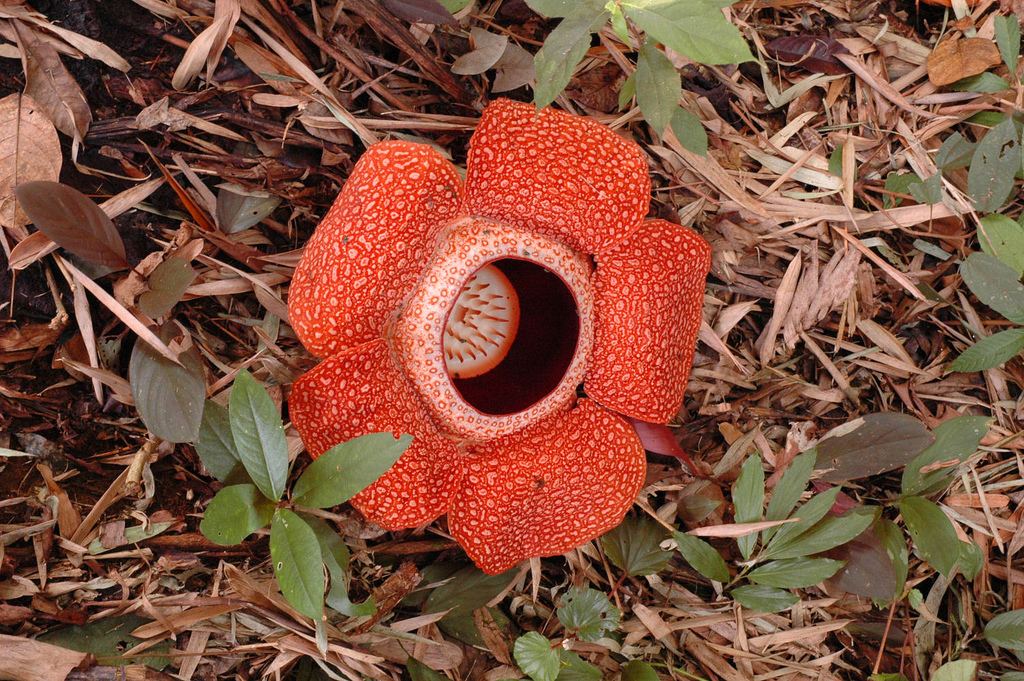
Malaysia is recognized as one of the world's 17 megadiverse countries, possessing an exceptionally high level of biodiversity and a significant number of endemic species. Its tropical rainforests, believed to be among the oldest on Earth (some dating back 130 million years), are home to a vast array of flora and fauna. About two-thirds of Malaysia was covered in forest as of 2007.
The country is estimated to contain 20% of the world's animal species. There are about 210 mammal species, including iconic animals like the Malayan tiger (a critically endangered subspecies), Asian elephant, orangutan (found in Borneo), Malayan tapir, and various species of monkeys and gibbons. Over 620 bird species have been recorded in Peninsular Malaysia alone, with many more in East Malaysia, including numerous endemic species in the Bornean mountains. Malaysia also hosts around 250 reptile species (including about 150 snake species and 80 lizard species) and about 150 frog species. The insect diversity is immense, with thousands of species.
Malaysia's marine biodiversity is also remarkable. Its waters, particularly around islands like Sipadan (often cited as one of the world's top diving spots), are part of the Coral Triangle, a global hotspot for marine biodiversity, with around 600 coral species and 1,200 fish species. The Exclusive economic zone of Malaysia covers an area 1.5 times larger than its land area. Mangrove forests, covering over 0.6 K mile2 (1.43 K km2), and peat swamp forests are also important ecosystems.
The plant life is equally rich, with an estimated 8,500 species of vascular plants in Peninsular Malaysia and another 15,000 in East Malaysia. The forests are dominated by dipterocarps. East Malaysian forests are particularly diverse, with some areas having up to 240 different tree species per hectare. Malaysia is also home to the Rafflesia, which produces the world's largest flower, some species reaching up to 3.3 ft (1 m) in diameter. Nearly 4,000 species of fungi have been recorded.
However, this rich biodiversity faces significant threats. Deforestation due to logging, agricultural expansion (especially for palm oil plantations), and infrastructure development is a major concern, leading to habitat loss and fragmentation. Over 80% of Sarawak's rainforest has been impacted by logging, and over 60% of the peninsula's forests have been cleared. This has endangered many species and worsened environmental problems like soil erosion and flooding. Wildlife trafficking and illegal fishing (including destructive methods like dynamite fishing) also pose serious threats to both terrestrial and marine ecosystems. Pollution from industrial and agricultural sources further degrades habitats.
Conservation efforts are underway, but their effectiveness is often debated in the context of economic development priorities. The Malaysian government signed the Rio Convention on Biological Diversity in 1993 and has established numerous national parks and protected areas, such as Taman Negara, Gunung Mulu National Park, and Kinabalu National Park (both UNESCO World Heritage Sites). There are 28 national parks, with 23 in East Malaysia and five in the peninsula. Efforts to promote sustainable development and ecotourism are being pursued, and the federal government has aimed to reduce logging rates. Addressing the conflict between economic growth and environmental protection remains a critical challenge, with civil society groups and environmental organizations advocating for stronger enforcement of environmental laws and more sustainable land-use policies to protect Malaysia's invaluable natural heritage.
5. Government and Politics
Malaysia operates as a federal constitutional monarchy and a parliamentary democracy. The political system is closely modeled on the Westminster system, a legacy of British colonial rule. The country's governance structure involves a separation of powers among the executive, legislative, and judicial branches, though in practice, the executive has historically held significant influence. Politics in Malaysia are characterized by a multi-ethnic society where ethnic considerations often play a significant role in party alignments and policy-making.
5.1. Government Structure
Malaysia is a federation comprising 13 states and three federal territories. The Constitution of Malaysia is the supreme law of the land and outlines the structure of the government. It establishes a parliamentary system with a bicameral Parliament at the federal level. The principle of separation of powers divides governmental authority into three branches:
1. **Legislative Branch (Perundangan):** This branch is responsible for making laws. At the federal level, it consists of the Parliament of Malaysia, which comprises the Yang di-Pertuan Agong (King), the Dewan Negara (Senate or Upper House), and the Dewan Rakyat (House of Representatives or Lower House).
2. **Executive Branch (Eksekutif):** This branch is responsible for implementing and enforcing laws. It is led by the Prime Minister and the Cabinet. The Prime Minister is appointed by the Yang di-Pertuan Agong from among the members of the Dewan Rakyat who, in the King's judgment, is likely to command the confidence of the majority of the members of that House.
3. **Judicial Branch (Kehakiman):** This branch is responsible for interpreting laws and administering justice. It is headed by the Federal Court, the highest court in the country. The judiciary is theoretically independent, though its autonomy has faced challenges at times.
Each of the 13 states also has its own constitution and government structure, typically consisting of a State Legislative Assembly (Dewan Undangan Negeri) and a state executive council led by a Chief Minister (Menteri Besar in states with hereditary rulers, or Ketua Menteri in other states).
5.2. Head of State
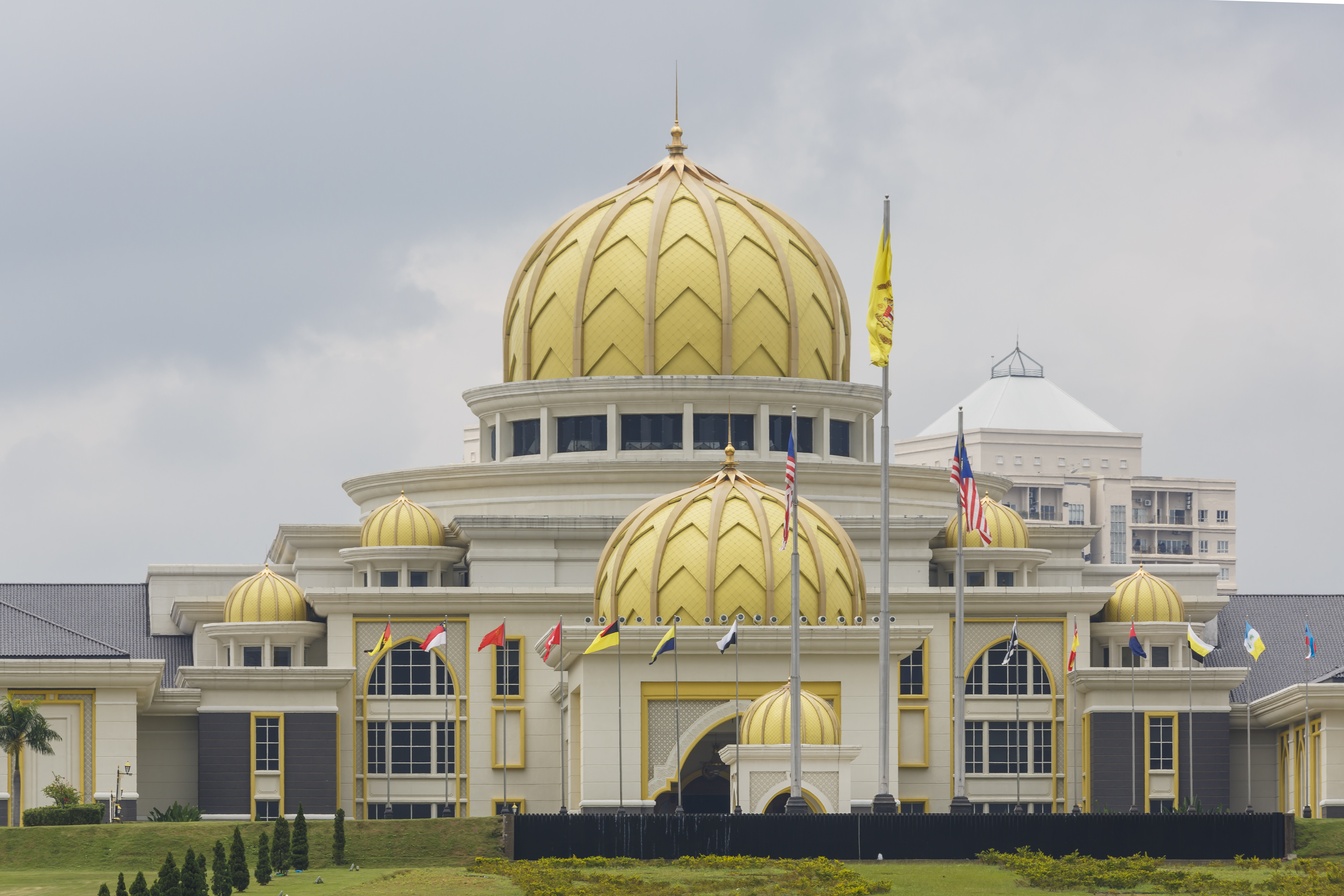
The head of state of Malaysia is the Yang di-Pertuan Agong, often referred to as the King. Malaysia has a unique system of elective monarchy where the Yang di-Pertuan Agong is elected for a five-year term. The election is conducted by the Conference of Rulers (Majlis Raja-Raja), which comprises the nine hereditary rulers (Sultans or equivalent titles) of the Malay states (Perlis, Kedah, Perak, Selangor, Negeri Sembilan, Johor, Pahang, Terengganu, and Kelantan). The governors (Yang di-Pertua Negeri) of the other four states (Penang, Malacca, Sabah, and Sarawak) are members of the Conference of Rulers but do not participate in the election of the Yang di-Pertuan Agong.
By informal agreement, the position of Yang di-Pertuan Agong is rotated among the nine hereditary rulers, generally based on seniority of their reign. The current Yang di-Pertuan Agong is Ibrahim Iskandar of Johor, who ascended to the federal throne on January 31, 2024.
The Yang di-Pertuan Agong's role is largely ceremonial and symbolic, similar to that of a constitutional monarch in other parliamentary democracies. Constitutional powers include:
- Appointing the Prime Minister, based on who commands the confidence of the majority in the Dewan Rakyat.
- Appointing Cabinet ministers and deputy ministers on the advice of the Prime Minister.
- Giving royal assent to bills passed by Parliament before they become law (though this power is limited).
- Dissolving Parliament on the advice of the Prime Minister, leading to general elections.
- Acting as the Supreme Commander of the Malaysian Armed Forces.
- Serving as the head of Islam in his own state, Penang, Malacca, Sabah, Sarawak, and the Federal Territories.
- The power to grant pardons, reprieves, and respites for offences tried in federal courts and in the Federal Territories.
While the King acts on the advice of the Prime Minister and the Cabinet in most matters, there are certain discretionary powers, such as the appointment of the Prime Minister and the withholding of consent to dissolve Parliament. Constitutional amendments in 1993 and 1994 somewhat curtailed some of the monarch's powers and immunities, aiming to balance the monarch's traditional role with modern democratic governance.
5.3. Executive Branch
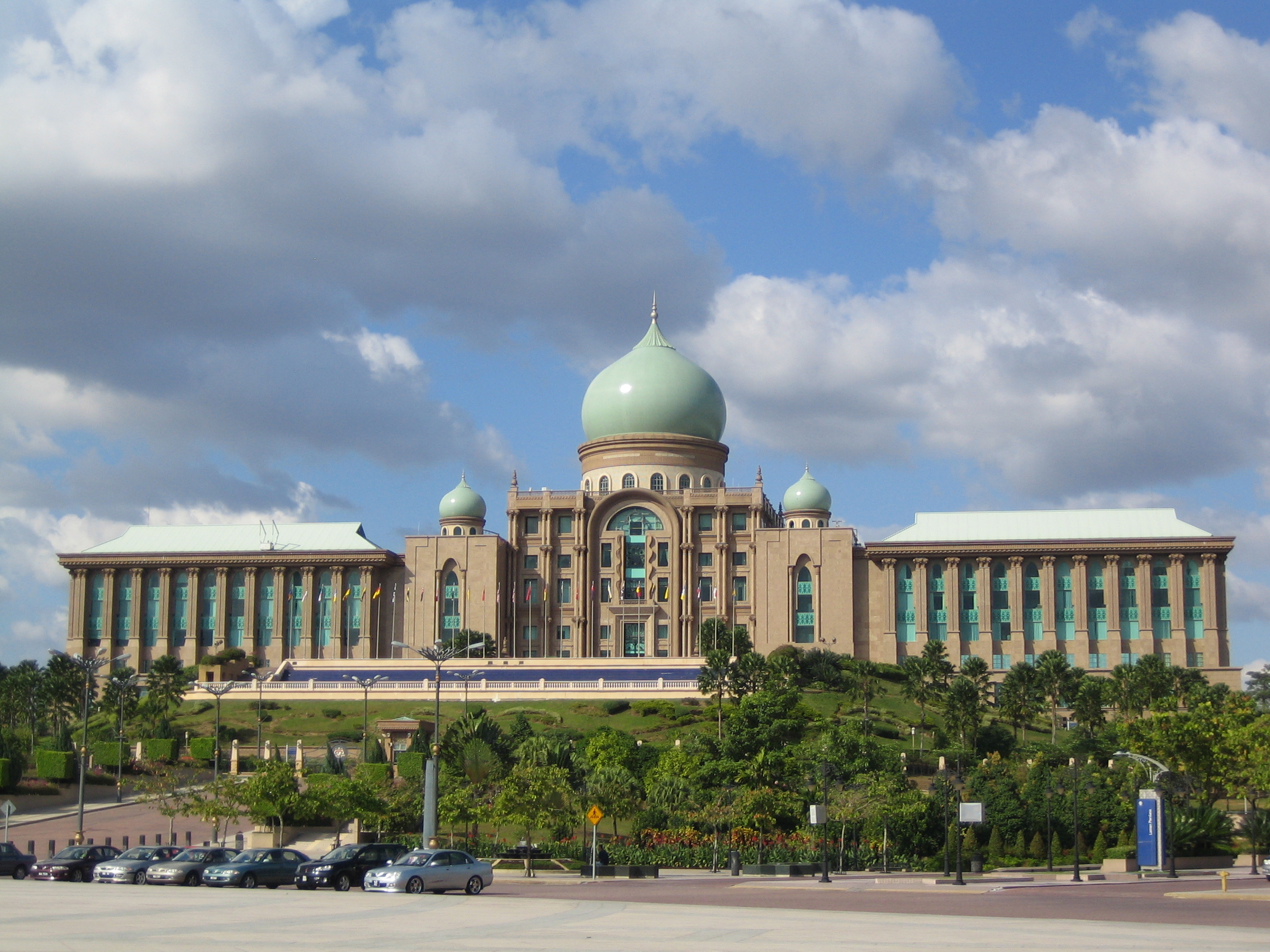
The executive branch of the Malaysian government is responsible for the day-to-day administration of the country and the implementation of laws passed by the legislature. Executive power is vested in the Cabinet, which is led by the Prime Minister.
The **Prime Minister** is the head of government. According to the constitution, the Yang di-Pertuan Agong appoints as Prime Minister a member of the Dewan Rakyat (House of Representatives) who, in the King's judgment, is likely to command the confidence of the majority of the members of that House. The Prime Minister is typically the leader of the political party or coalition that holds the majority of seats in the Dewan Rakyat. The current Prime Minister is Anwar Ibrahim.
The **Cabinet** is appointed by the Yang di-Pertuan Agong on the advice of the Prime Minister. Cabinet ministers are chosen from among the members of both houses of Parliament (Dewan Rakyat and Dewan Negara). The Cabinet is collectively responsible to Parliament. It formulates government policies and directs the activities of the various government ministries and agencies.
Major government ministries cover a wide range of portfolios, including finance, home affairs, defense, education, health, foreign affairs, trade and industry, and others. Each ministry is headed by a minister, often assisted by one or more deputy ministers. The civil service, known as the Public Service of Malaysia, is responsible for carrying out the administrative functions of the government. Putrajaya serves as the federal administrative capital, where most government ministries and agencies are located.
The executive branch has historically been powerful in Malaysia. The Prime Minister, as the leader of the majority party or coalition, exercises significant influence over government policy and legislative agenda. Challenges to executive dominance and calls for greater accountability and transparency have been features of Malaysia's political discourse, particularly concerning issues of good governance and human rights.
5.4. Legislative Branch
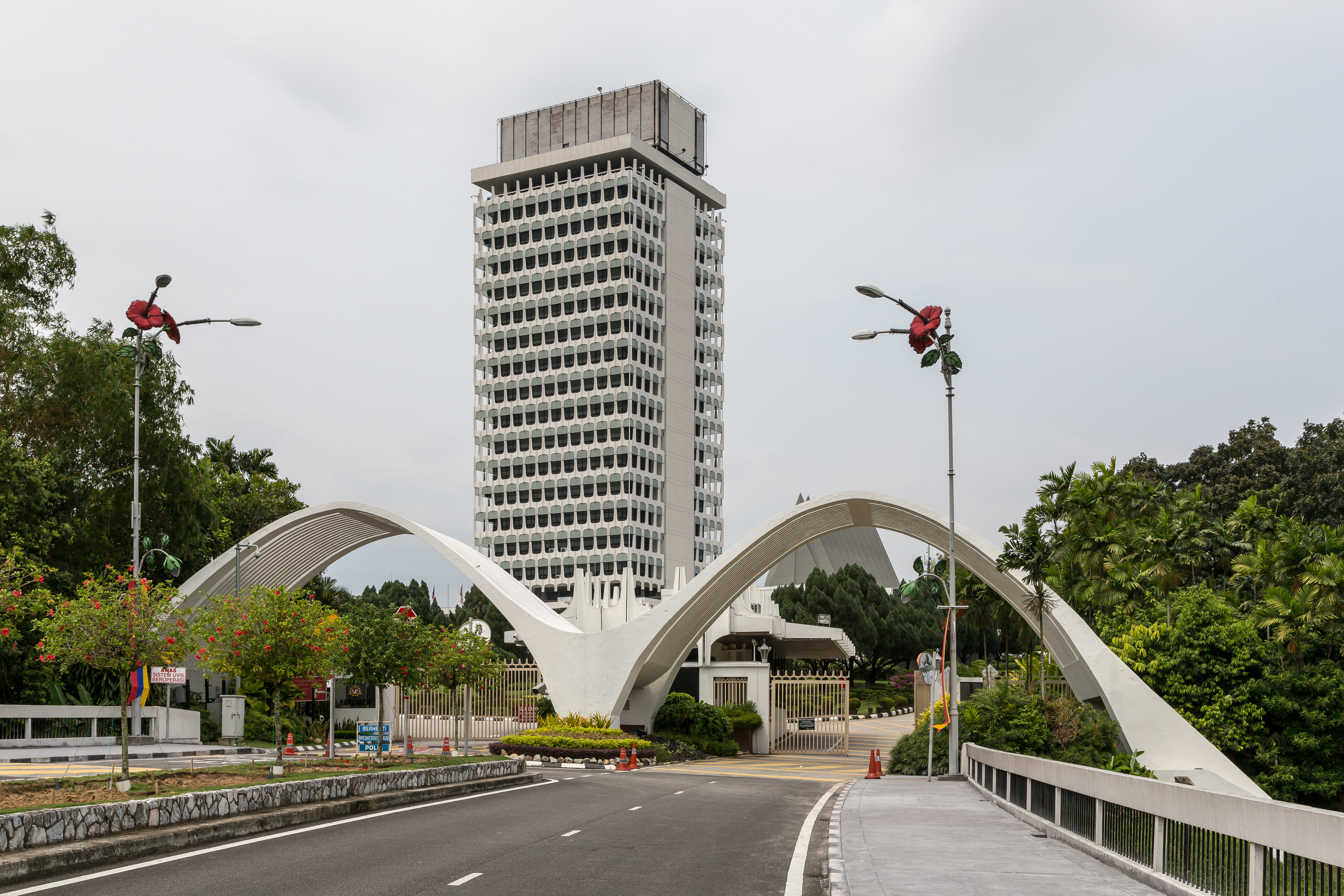
The legislative branch of the Malaysian federal government is the Parliament of Malaysia. It is a bicameral body, meaning it consists of two houses:
1. **Dewan Rakyat (House of Representatives):** This is the lower house and is the primary legislative chamber. It currently has 222 members, known as Members of Parliament (MPs), who are directly elected by the people through general elections. Elections are held at least once every five years, based on a first-past-the-post system in single-member constituencies. The Dewan Rakyat is where most government bills are introduced and debated. To become law, a bill must usually be passed by the Dewan Rakyat and then the Dewan Negara, before receiving Royal Assent from the Yang di-Pertuan Agong. The party or coalition with the majority of seats in the Dewan Rakyat forms the federal government, and its leader becomes the Prime Minister.
2. **Dewan Negara (Senate):** This is the upper house. It currently has 70 members, known as Senators. Senators serve three-year terms, and their terms can be renewed once. The composition of the Dewan Negara is as follows:
- 26 Senators are elected by the 13 State Legislative Assemblies, with each state electing two Senators.
- 44 Senators are appointed by the Yang di-Pertuan Agong on the advice of the Prime Minister. These appointed Senators are intended to represent various professional fields, minority groups, or individuals who have distinguished service or achieved distinction in public life.
The Dewan Negara acts as a house of review. It can debate bills passed by the Dewan Rakyat and propose amendments. However, its power to block legislation is limited; it can only delay bills for a certain period. If the Dewan Negara rejects a bill or fails to pass it within a specified time, the Dewan Rakyat can bypass the Dewan Negara and present the bill directly to the Yang di-Pertuan Agong for Royal Assent (except for constitutional amendments, which require specific majorities in both houses).
The **legislative process** typically begins with a bill being introduced in the Dewan Rakyat (though some bills can originate in the Dewan Negara, except for money bills which must start in the Dewan Rakyat). The bill goes through several readings and committee stages in both houses. If passed by both houses (or by the Dewan Rakyat under certain circumstances if the Dewan Negara objects), it is presented to the Yang di-Pertuan Agong for Royal Assent. Once Royal Assent is given, the bill becomes an Act of Parliament and is gazetted as law.
Parliament's functions include:
- Making and amending federal laws.
- Approving the federal budget and new taxes.
- Scrutinizing the actions of the government through debates, question time, and parliamentary committees.
- Serving as a forum for public discussion and debate on national issues.
The effectiveness of Parliament as a check on executive power has been a subject of discussion, with concerns sometimes raised about executive dominance, particularly when the ruling coalition holds a large majority. Efforts to strengthen parliamentary oversight and empower parliamentary committees are ongoing aspects of Malaysia's democratic development.
5.5. Judicial Branch
The judicial branch in Malaysia is responsible for the administration of justice and the interpretation of laws. The Malaysian legal system is primarily based on English common law, a legacy of British colonial rule, but it also incorporates local customs and Islamic law for Muslims in personal matters.
The hierarchy of courts in Malaysia is as follows:
1. **Federal Court of Malaysia (Mahkamah Persekutuan):** This is the highest court in Malaysia and the final court of appeal. It hears appeals from the Court of Appeal, and also has original jurisdiction in certain constitutional matters and disputes between states or between the federal government and a state. It is headed by the Chief Justice of Malaysia.
2. **Court of Appeal of Malaysia (Mahkamah Rayuan):** This court hears appeals from the High Courts on both civil and criminal matters. It is headed by the President of the Court of Appeal.
3. **High Courts of Malaysia (Mahkamah Tinggi):** There are two High Courts with co-ordinate jurisdiction: the High Court in Malaya (for Peninsular Malaysia) and the High Court in Sabah and Sarawak (for East Malaysia). They have general supervisory and revisionary jurisdiction over all subordinate courts and hear appeals from them. They also have original jurisdiction in more serious civil and criminal cases, such as those involving amounts exceeding certain limits or offences punishable by death.
4. **Subordinate Courts:** These include:
- Sessions Courts (Mahkamah Sesyen):** They have jurisdiction over most criminal offences except those punishable by death, and can hear civil cases where the amount in dispute does not exceed RM1 million (unless agreed otherwise by parties).
- Magistrates' Courts (Mahkamah Majistret):** They deal with minor civil and criminal cases. First Class Magistrates have wider jurisdiction than Second Class Magistrates.
- Courts for Children:** These courts deal with offences committed by minors (persons under 18 years of age).
Parallel to the civil court system, there is a system of **Syariah Courts (Mahkamah Syariah)** which have jurisdiction over Muslims only, in matters of Islamic personal law and certain religious offences. These matters include marriage, divorce, inheritance, apostasy, and custody. The Syariah Courts have their own hierarchy, with Syariah Subordinate Courts, Syariah High Courts, and Syariah Courts of Appeal at the state level. The Federal Court does not hear appeals from the Syariah Courts, as they are considered separate jurisdictions. The relationship and occasional conflicts between the civil and Syariah court systems have been a source of legal and social debate, particularly in cases involving religious conversion or family law disputes affecting both Muslims and non-Muslims.
The independence of the judiciary is a constitutional principle, but it has faced periods of challenge and public scrutiny, particularly regarding the appointment process for judges and concerns about executive influence. Efforts to strengthen judicial independence and ensure public confidence in the justice system are crucial for Malaysia's democratic health and the rule of law.
5.6. Political Parties and Elections
Malaysia has a multi-party system, although historically, one coalition, Barisan Nasional (BN; National Front), dominated federal politics from independence until 2018. Elections are a central feature of Malaysian democracy, determining the composition of the Dewan Rakyat (federal House of Representatives) and the State Legislative Assemblies.
- Major Political Parties and Coalitions:**
- Pakatan Harapan (PH; Alliance of Hope):** A major political coalition that formed the federal government after the 2018 general election, marking the first change of federal government in Malaysia's history. Key component parties include the People's Justice Party (PKR), Democratic Action Party (DAP), and National Trust Party (AMANAH). PH advocates for reforms, good governance, and social justice.
- Barisan Nasional (BN; National Front):** Formerly the long-ruling coalition, dominated by the United Malays National Organisation (UMNO). Other component parties include the Malaysian Chinese Association (MCA) and the Malaysian Indian Congress (MIC). BN generally represents more conservative and Malay-centric interests.
- Perikatan Nasional (PN; National Alliance):** A coalition that emerged following the political crisis of 2020, initially forming the government. Key parties include Bersatu (Malaysian United Indigenous Party) and the Pan-Malaysian Islamic Party (PAS). PN often emphasizes Malay-Muslim unity and conservative values.
- Electoral System:**
Federal parliamentary elections are held at least once every five years to elect members of the Dewan Rakyat. Malaysia uses a first-past-the-post (FPTP) electoral system in single-member constituencies. The candidate who receives the most votes in a constituency wins the seat. This system has sometimes been criticized for not accurately reflecting the overall popular vote share of parties (i.e., a party can win a majority of seats without winning a majority of the popular vote).
State elections for State Legislative Assemblies are usually held concurrently with federal elections, although states have the autonomy to dissolve their assemblies at different times (Sarawak, for instance, often holds its elections separately).
The Election Commission (Suruhanjaya Pilihan Raya Malaysia) is responsible for conducting elections. The fairness and integrity of the electoral process have often been subjects of public debate and scrutiny, with concerns raised about issues such as gerrymandering, malapportionment (unequal constituency sizes), the use of government resources by incumbent parties, and media bias. Reforms to the electoral system and processes have been a key demand of opposition parties and civil society groups aiming to enhance democratic fairness and transparency. The voting age was lowered from 21 to 18 in 2019.
- Outcomes of Major Elections:**
These developments highlight a more competitive and dynamic political environment in Malaysia, though challenges related to democratic processes, institutional reform, and political stability persist.
5.7. Ethnicity in Politics
Ethnicity is a deeply significant and often defining factor in Malaysian politics. The country's multi-ethnic composition, primarily consisting of Malays, Chinese, and Indians, alongside various indigenous groups (collectively termed Bumiputera along with Malays), has profoundly shaped its political landscape, party structures, and public policies since independence.
- Ethnic-Based Political Parties:**
Many of Malaysia's major political parties were initially formed along ethnic lines or have a primary support base within a specific ethnic community.
- The United Malays National Organisation (UMNO) has historically been the dominant party representing Malay interests.
- The Malaysian Chinese Association (MCA) and the Malaysian Indian Congress (MIC) were formed to represent the Chinese and Indian communities, respectively, and were long-term partners with UMNO in the Barisan Nasional coalition.
- The Pan-Malaysian Islamic Party (PAS) primarily appeals to conservative Malay-Muslim voters.
- The Democratic Action Party (DAP), while officially multiracial, draws significant support from the Chinese community and advocates for secularism and social democracy.
- Parties in East Malaysia (Sabah and Sarawak) often represent the interests of specific indigenous ethnic groups in those states.
While some newer parties and coalitions, like Pakatan Harapan, have strived for a more multiracial platform, ethnic considerations continue to influence voter behavior and political strategies.
- The Bumiputera Policy:**
A central element of ethnicity in Malaysian politics is the Bumiputera policy, which encompasses a range of affirmative action measures designed to improve the socio-economic standing of Malays and other indigenous peoples. This policy was formally institutionalized through the New Economic Policy (NEP) (1971-1990) following the 13 May 1969 race riots, and has been continued in various forms under subsequent national development plans.
The Bumiputera policy provides preferential treatment in areas such as:
- Public sector employment and promotions.
- Admission to public universities and allocation of scholarships.
- Ownership of equity in businesses and licensing.
- Access to housing and other economic opportunities.
The rationale for these policies is rooted in addressing historical economic imbalances, where Bumiputeras were perceived to be economically disadvantaged compared to other ethnic groups, particularly the Chinese. Proponents argue that these policies have been crucial for social stability and for creating a Malay middle class.
However, the Bumiputera policy has been a source of significant political debate and social tension. Critics, including many non-Bumiputeras and some reform-minded Malays, argue that:
- It is discriminatory and undermines principles of meritocracy and equal opportunity.
- It has sometimes led to cronyism, inefficiency, and the enrichment of a connected elite rather than broadly benefiting the Bumiputera masses.
- It may perpetuate ethnic divisions and hinder national unity.
- Its long-term continuation is questioned, with calls for a more needs-based, rather than race-based, approach to affirmative action that focuses on uplifting all Malaysians from disadvantaged backgrounds, regardless of ethnicity.
- Ethnic Relations and Equity:**
The emphasis on ethnic identity in politics has led to a delicate balance in managing inter-ethnic relations. Issues of language, religion (Islam as the official religion), and cultural rights are often intertwined with ethnic politics. Political discourse frequently revolves around the protection of various community rights and the perceived threats to them.
Achieving genuine ethnic equity and fostering a truly inclusive national identity, where all citizens feel a sense of belonging and equal stake in the nation's progress, remains an ongoing challenge. Debates about the future of the Bumiputera policy, the promotion of a "Bangsa Malaysia" (Malaysian Nation) identity that transcends ethnic lines, and ensuring fair treatment for all communities are central to Malaysia's continued political and social development. Ongoing political discourse includes calls for policies that address socio-economic disparities based on need rather than race, and that strengthen democratic institutions to protect the rights of all citizens, reflecting aspirations for a more equitable and inclusive society.
5.8. Administrative Divisions
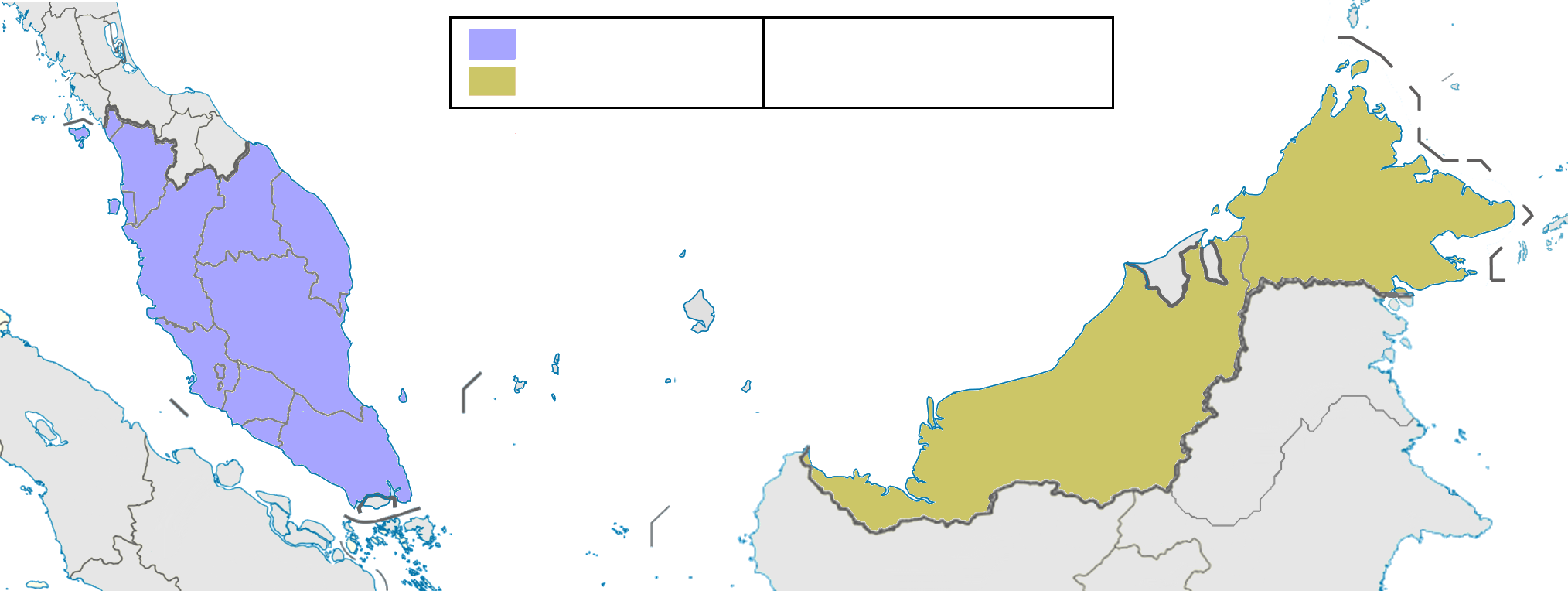
Malaysia is a federation composed of 13 states (negeri) and three federal territories (Wilayah Persekutuan). These are geographically divided between Peninsular Malaysia (West Malaysia) and East Malaysia (on the island of Borneo).
- Peninsular Malaysia** consists of 11 states and two federal territories:
- States:**
1. Johor (State capital: Johor Bahru) - Located at the southern tip of the peninsula, known for its economic links with Singapore and agricultural produce.
2. Kedah (State capital: Alor Setar) - A northern state, known as the "rice bowl" of Malaysia, with a rich history.
3. Kelantan (State capital: Kota Bharu) - A conservative state on the northeast coast, known for its unique Malay culture and traditions.
4. Malacca (Melaka) (State capital: Malacca City) - A historic state with a rich colonial past, a UNESCO World Heritage site.
5. Negeri Sembilan (State capital: Seremban) - Known for its Minangkabau traditions and unique adat perpatih (matrilineal customary law).
6. Pahang (State capital: Kuantan) - The largest state in Peninsular Malaysia, rich in natural resources and home to Taman Negara (National Park).
7. Penang (State capital: George Town) - An island state with a vibrant multicultural heritage, another UNESCO World Heritage site, and a major electronics manufacturing hub.
8. Perak (State capital: Ipoh) - Known for its tin mining history, limestone hills, and colonial architecture.
9. Perlis (State capital: Kangar) - The smallest state in Malaysia, located in the north, bordering Thailand.
10. Selangor (State capital: Shah Alam) - The most populous and developed state, surrounding Kuala Lumpur and Putrajaya.
11. Terengganu (State capital: Kuala Terengganu) - An east coast state known for its beaches, islands, and traditional Malay culture.- Federal Territories:**
1. Kuala Lumpur - The national capital and largest city, a major commercial and cultural center.
2. Putrajaya - The federal administrative capital, home to most government ministries.- East Malaysia** consists of two states and one federal territory:
- States:**
1. Sabah (State capital: Kota Kinabalu) - Known for Mount Kinabalu, rich biodiversity, and diverse indigenous cultures.
2. Sarawak (State capital: Kuching) - The largest state by area, known for its rainforests, extensive river systems, and diverse indigenous communities.- Federal Territory:**
1. Labuan (Capital: Victoria) - An island off the coast of Sabah, an offshore financial center.
- Local Governance:**
Each state has its own constitution and a unicameral State Legislative Assembly (Dewan Undangan Negeri), whose members are elected. State governments are led by a Chief Minister (Menteri Besar in states with hereditary rulers, or Ketua Menteri in other states). The federal territories are governed directly by the federal government through the Ministry of Federal Territories. Below the state level, local government is administered by local authorities such as city councils (Majlis Bandaraya), municipal councils (Majlis Perbandaran), and district councils (Majlis Daerah), which are responsible for local services and development. Sabah and Sarawak have a greater degree of autonomy compared to the peninsular states, particularly in matters of immigration, land, and local government. This autonomy is a legacy of the terms under which they joined the federation in 1963.
5.9. Foreign Relations
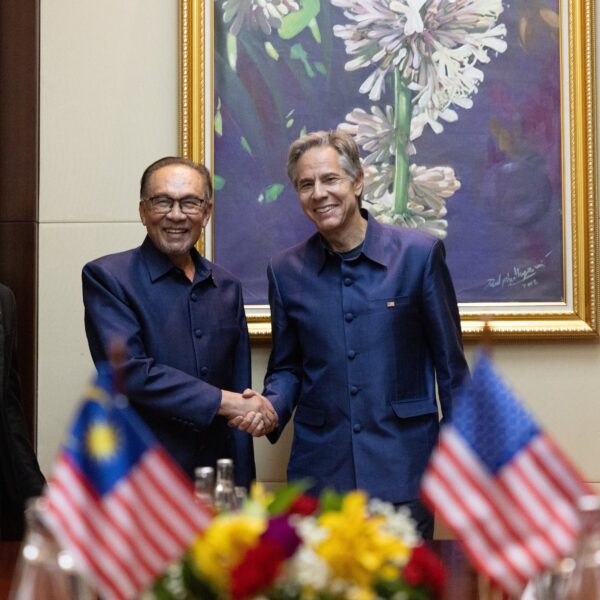
Malaysia's foreign policy is officially based on the principle of neutrality, maintaining peaceful relations with all countries, and prioritizing the security and stability of Southeast Asia. It is a founding member of the Association of Southeast Asian Nations (ASEAN) and the Organisation of Islamic Cooperation (OIC), and actively participates in numerous international organizations, including the United Nations (UN), the Asia-Pacific Economic Cooperation (APEC), the Non-Aligned Movement (NAM), and the Commonwealth of Nations.
Key aspects of Malaysia's foreign relations include:
- ASEAN Centrality:** Malaysia plays a significant role in ASEAN, advocating for regional integration, economic cooperation, and a collective voice on regional and international issues. It has chaired ASEAN multiple times and hosted key summits like the first East Asia Summit in 2005.
- Relations with Major Powers:** Malaysia maintains pragmatic relations with major global powers, including the United States, China, and Japan. It balances its economic ties with China, its largest trading partner, with security cooperation with the United States and other Western countries. The relationship with China involves significant trade and investment, but also complexities related to the South China Sea disputes.
- Islamic World:** As a majority-Muslim country, Malaysia actively engages with the Islamic world through the OIC and bilateral relations. It often seeks to project an image of a moderate and progressive Islamic nation and has spoken out on issues affecting Muslim communities globally, such as the Palestinian cause. Malaysia does not have diplomatic relations with Israel.
- Territorial Disputes:** Malaysia is a claimant state in the South China Sea disputes, with overlapping claims with China, Vietnam, the Philippines, and Brunei over certain islands and maritime features, primarily in the Spratly Islands area. While historically pursuing a quieter diplomacy compared to some other claimants, Malaysia has become more assertive in condemning encroachments into its territorial waters and airspace. It has also resolved some border issues, such as maritime boundary delimitations with Indonesia and an agreement with Brunei ending mutual land claims in 2009. The Philippines maintains a dormant claim to eastern Sabah.
- Human Rights and International Law:** Malaysia's stance on international human rights has sometimes been a point of contention. While engaging with UN human rights mechanisms, its domestic policies on issues like freedom of speech, assembly, and treatment of refugees and migrant workers have drawn criticism from international human rights organizations. From a social liberalism perspective, there is a need for Malaysia's foreign policy to more consistently champion human rights and international humanitarian law, not only in rhetoric but also in its bilateral and multilateral engagements, and to ensure its domestic practices align with these principles. Malaysia has signed the UN Treaty on the Prohibition of Nuclear Weapons.
- Bilateral Relations:** Malaysia maintains close ties with its immediate neighbors, though relations can sometimes be complex due to historical, economic, or border issues. For instance, relations with Singapore are multifaceted, involving close economic interdependence alongside occasional diplomatic disagreements. Ties with Indonesia are generally strong, based on shared cultural and linguistic heritage, but have also seen disputes over maritime boundaries and treatment of migrant workers.
Malaysia's foreign policy aims to safeguard its national sovereignty and economic interests while contributing to regional peace and stability. The perspectives of affected parties in territorial disputes, such as local fishing communities, and the human rights implications of its foreign policy decisions, are important considerations for a balanced and just approach to international relations.
5.10. Military
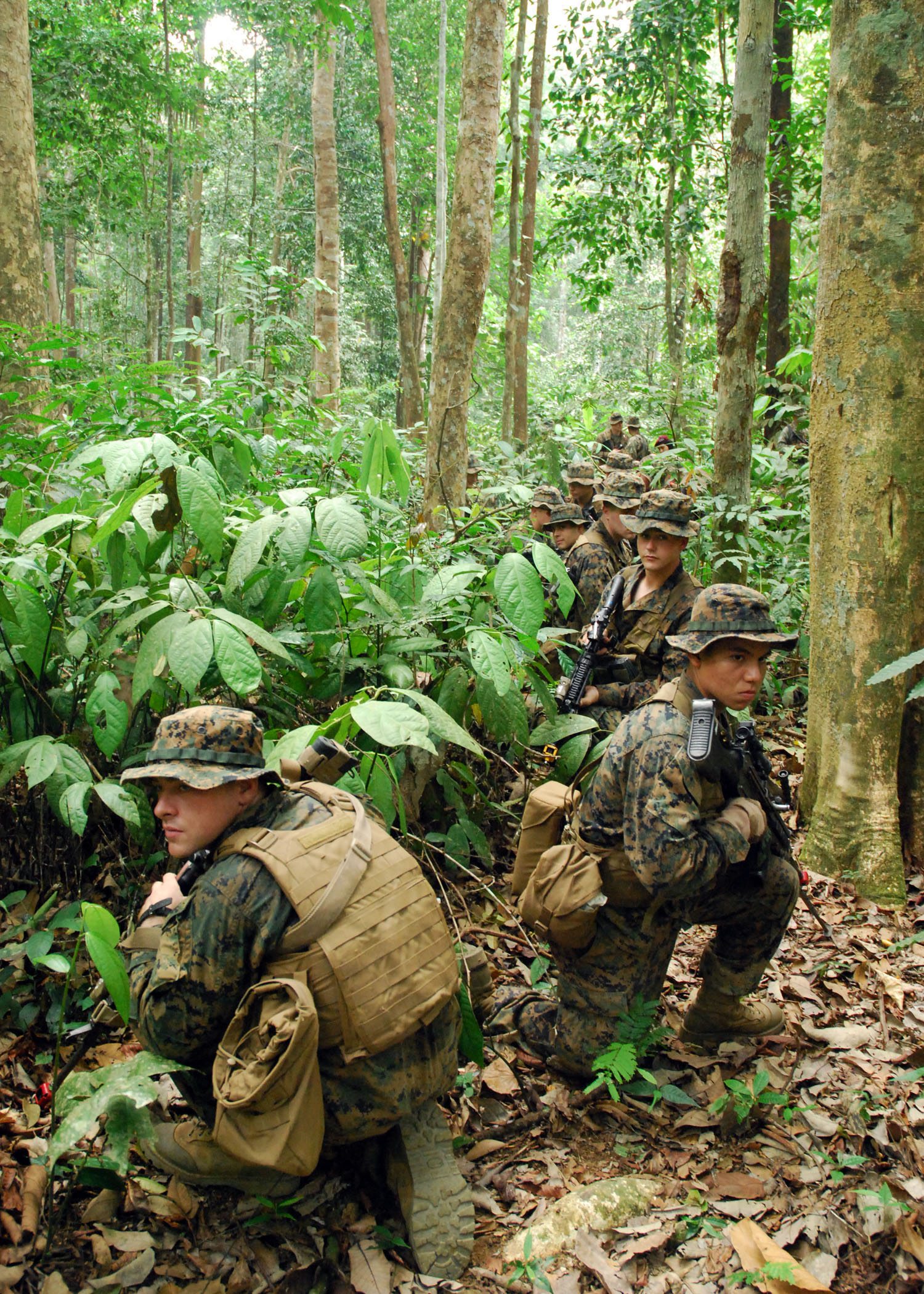
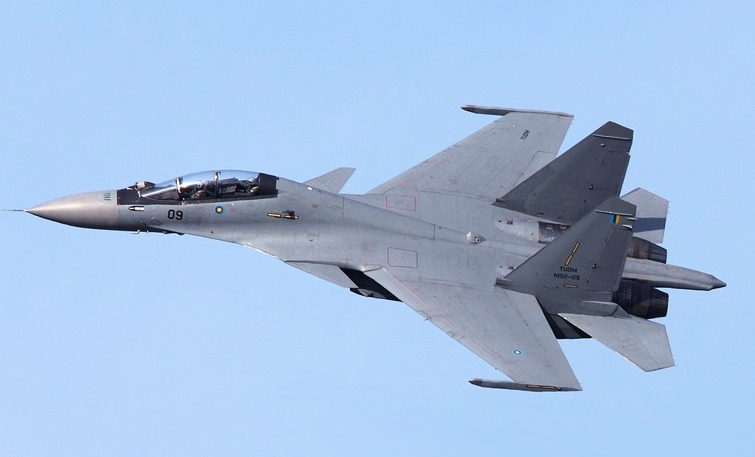
The Malaysian Armed Forces (Angkatan Tentera Malaysia, ATM) are responsible for the defense of Malaysia's sovereignty and territorial integrity, as well as supporting national interests and contributing to international peacekeeping efforts. The ATM consists of three main branches:
1. **Malaysian Army (Tentera Darat Malaysia, TDM):** The land-based force, responsible for ground operations, border security, and internal security assistance.
2. **Royal Malaysian Navy (Tentera Laut Diraja Malaysia, TLDM):** Responsible for maritime security, protecting Malaysia's extensive coastlines, territorial waters, and strategic sea lanes like the Strait of Malacca.
3. **Royal Malaysian Air Force (Tentera Udara Diraja Malaysia, TUDM):** Responsible for air defense, air superiority, and air support operations.
Malaysia does not have conscription; military service is voluntary, and the required age is 18. In terms of defense spending, the military utilizes approximately 1.5% of the country's GDP, and it employs around 1.23% of Malaysia's workforce.
- Key Defense Policies and Cooperation:**
The Malaysian Armed Forces are undergoing modernization efforts to enhance their capabilities in areas such as maritime surveillance, cybersecurity, and response to non-traditional security threats, reflecting the evolving security landscape in Southeast Asia.
5.11. Human Rights
The human rights situation in Malaysia presents a mixed picture, with constitutional guarantees often challenged by restrictive laws and practices. From a center-left/social liberalism perspective, several areas raise significant concerns regarding the protection of fundamental liberties and the rights of vulnerable groups.
- Freedom of Expression, Assembly, and Association:**
- Rights of Minorities:**
- Ethnic and Religious Minorities:** While Islam is the official religion, and Malays/Bumiputera enjoy special privileges under affirmative action policies, concerns exist about the rights and treatment of ethnic and religious minorities. Issues include perceived discrimination in public sector employment and education, restrictions on the building of non-Muslim places of worship, and controversies surrounding religious conversion (particularly out of Islam, which is legally complex and often prohibited for Muslims). The use of the word "Allah" by non-Muslims has also been a contentious issue.
- LGBT Rights:** Homosexuality is illegal in Malaysia under both secular law (Section 377 of the Penal Code, criminalizing "carnal intercourse against the order of nature") and, for Muslims, under Syariah law. LGBT individuals face significant discrimination, social stigma, and the threat of legal punishment, including caning and imprisonment. There have been instances of raids on LGBT gatherings and public shaming. Efforts by LGBT activists to advocate for rights and challenge discriminatory laws face strong opposition from conservative religious and political groups. Vigilante actions and hate speech against the LGBT community are serious concerns. The sodomy trials of Anwar Ibrahim were widely seen by human rights groups as politically motivated.
- Death Penalty:**
- Migrant Workers and Refugees:**
- Government Policies and Civil Society Efforts:**
Improving the human rights record requires comprehensive legal and institutional reforms, greater political will to uphold fundamental freedoms, and a commitment to ensuring equality and non-discrimination for all individuals in Malaysia.
6. Economy
Malaysia's economy is characterized as a relatively open, state-oriented, and newly industrialized market economy. It has experienced significant growth and structural transformation since independence, evolving from a primary commodity producer to a more diversified economy with substantial manufacturing and service sectors. The government has played an active role in economic development through various national plans and policies.
6.1. Economic Development and Structure

Post-independence, Malaysia's economy was heavily reliant on the export of raw materials, particularly rubber and tin. To address socio-economic imbalances and promote broader development, the government launched the New Economic Policy (NEP) in 1971, following the 13 May 1969 race riots. The NEP's twin goals were to eradicate poverty irrespective of race and to restructure society to reduce the identification of race with economic function, aiming to increase Bumiputera (Malays and other indigenous peoples) participation in the economy. The NEP led to significant state intervention, including the establishment of state-owned enterprises and affirmative action programs. While it contributed to poverty reduction and the creation of a Malay middle class, its impact on overall social equity and its potential for fostering cronyism and ethnic divisions have been subjects of ongoing debate. Critics argue that the race-based approach may not have effectively reached the most marginalized Bumiputeras and could have hindered meritocracy.
From the 1980s, under Prime Minister Mahathir Mohamad, Malaysia pursued rapid industrialization, shifting from an agriculture-based economy to one increasingly focused on manufacturing (especially electronics) and, later, services. The "Look East Policy," emulating the development models of Japan and South Korea, was a hallmark of this era. National development strategies like "Wawasan 2020" (Vision 2020), launched in 1991, aimed for Malaysia to achieve fully developed country status by the year 2020. This period saw significant infrastructure development and economic growth.
The Asian financial crisis of 1997-98 posed a major challenge, but Malaysia, under Mahathir, controversially implemented capital controls and pegged the ringgit, avoiding an IMF bailout, which some analysts argue helped in its recovery. The economy has since diversified further, with the service sector becoming the largest contributor to GDP.
However, achieving equitable development and addressing social and environmental impacts remain key challenges. While absolute poverty has declined, concerns about relative poverty, income inequality (both inter-ethnic and intra-ethnic), and the environmental consequences of rapid development (such as deforestation for palm oil plantations) persist. Sustainable development and inclusive growth are crucial considerations for Malaysia's future economic path. The goal of Wawasan 2020 was not fully met, and subsequent development plans continue to address these complex issues.
6.2. Main Industries
Malaysia's economy is diversified across several key industrial sectors, reflecting its transition from a commodity-based to a more industrialized and service-oriented nation.
- Manufacturing:** This has been a cornerstone of Malaysia's economic growth for decades.
- Electronics and Electrical Products (E&E):** Malaysia is a major global hub for the assembly and testing of semiconductors and other electronic components. It plays a significant role in the global electronics supply chain. Penang is a notable center for this industry.
- Automotive:** Malaysia has a domestic automotive industry, with national car manufacturers like Proton and Perodua. It also hosts assembly plants for international car brands.
- Other manufacturing sub-sectors include chemicals, machinery and equipment, petroleum products, and processed food.
- Agriculture:** While its share of GDP has declined, agriculture remains important, particularly for rural employment and exports.
- Palm Oil:** Malaysia is one of the world's largest producers and exporters of palm oil. This industry is a major foreign exchange earner but also faces scrutiny over environmental sustainability and deforestation.
- Rubber:** Historically a dominant commodity, rubber production continues, though on a smaller scale compared to palm oil. Malaysia is still a significant producer of natural rubber and rubber products like gloves.
- Other agricultural products include cocoa, pepper, timber, and fruits. Fisheries and aquaculture are also significant.
- Mining and Quarrying:**
- Petroleum and Natural Gas:** Malaysia is a net exporter of oil and natural gas, primarily sourced from offshore fields in the South China Sea (off Peninsular Malaysia, Sabah, and Sarawak). Petronas, the national oil and gas company, is a major contributor to government revenue and a global energy player.
- Tin mining, once a pillar of the economy, has declined significantly.
- Services:** This is now the largest sector of the Malaysian economy.
- Tourism:** Tourism is a significant contributor to GDP and employment, attracting visitors with its diverse cultural heritage, natural attractions (rainforests, beaches, islands), and modern cities. Medical tourism has also been a growing niche.
- Finance and Banking:** Kuala Lumpur is a regional financial center. Malaysia has a well-developed banking system, including a significant Islamic finance sector, where it is a global leader.
- Wholesale and Retail Trade:** A large and dynamic sector catering to domestic consumption.
- Telecommunications and Information Technology:** The Multimedia Super Corridor (MSC) initiative has aimed to foster the growth of the IT and digital economy.
- Transportation and Logistics:** Driven by Malaysia's role as a trading nation and its strategic location.
The government continues to promote diversification and value-addition across these sectors, with an emphasis on moving towards higher-technology industries, knowledge-based services, and sustainable practices.
6.3. Trade
Trade plays a vital role in Malaysia's economy, reflecting its open and export-oriented nature. The country is strategically located along major shipping routes, particularly the Strait of Malacca.
- Major Export Items:**
Malaysia's exports are diverse, covering manufactured goods, commodities, and agricultural products. Key export categories include:
1. **Electrical and Electronic (E&E) Products:** This is consistently the largest export category, encompassing semiconductors, integrated circuits, consumer electronics, and telecommunications equipment.
2. **Petroleum and Liquefied Natural Gas (LNG):** Crude oil, refined petroleum products, and LNG are major foreign exchange earners, managed by the national oil company, Petronas.
3. **Palm Oil and Palm Oil-based Products:** Malaysia is one of the world's top exporters of palm oil and related products used in food, oleochemicals, and biofuels.
4. **Chemicals and Chemical Products:** Including plastics, resins, and various industrial chemicals.
5. **Machinery, Equipment, and Parts:** Reflecting the growth of the manufacturing sector.
6. **Rubber Products:** Particularly medical gloves, for which Malaysia is a leading global supplier, as well as tires and other rubber goods.
7. **Manufactured Goods:** Including optical and scientific equipment, wood products, and textiles.
- Major Import Items:**
Imports consist largely of intermediate goods for the manufacturing sector, capital goods, and consumer products. Key import categories include:
1. **Electrical and Electronic (E&E) Products:** Intermediate components and parts for assembly in Malaysia's E&E industry.
2. **Machinery and Transport Equipment:** Industrial machinery, vehicles, and parts needed for various sectors.
3. **Chemicals and Chemical Products:** Raw materials and processed chemicals.
4. **Petroleum Products:** While an exporter of crude oil, Malaysia also imports certain refined petroleum products.
5. **Manufactured Goods:** A variety of finished and semi-finished goods.
6. **Food:** Malaysia is a net importer of certain food items to meet domestic demand.
- Major Trading Partners:**
Malaysia's main trading partners include:
- China (often the largest trading partner for both exports and imports)
- Singapore (a key trading and transshipment hub)
- United States
- Japan
- European Union (EU) countries
- Other ASEAN countries (e.g., Thailand, Vietnam, Indonesia)
- Balance of Trade:**
Malaysia has generally maintained a trade surplus (exports exceeding imports) over the years, which contributes positively to its balance of payments. The performance of its external trade is closely linked to global economic conditions, commodity prices, and demand in its key export markets. The government actively promotes trade through various agencies and participates in regional trade agreements like the ASEAN Free Trade Area (AFTA) and broader pacts such as the Regional Comprehensive Economic Partnership (RCEP).
6.4. Infrastructure
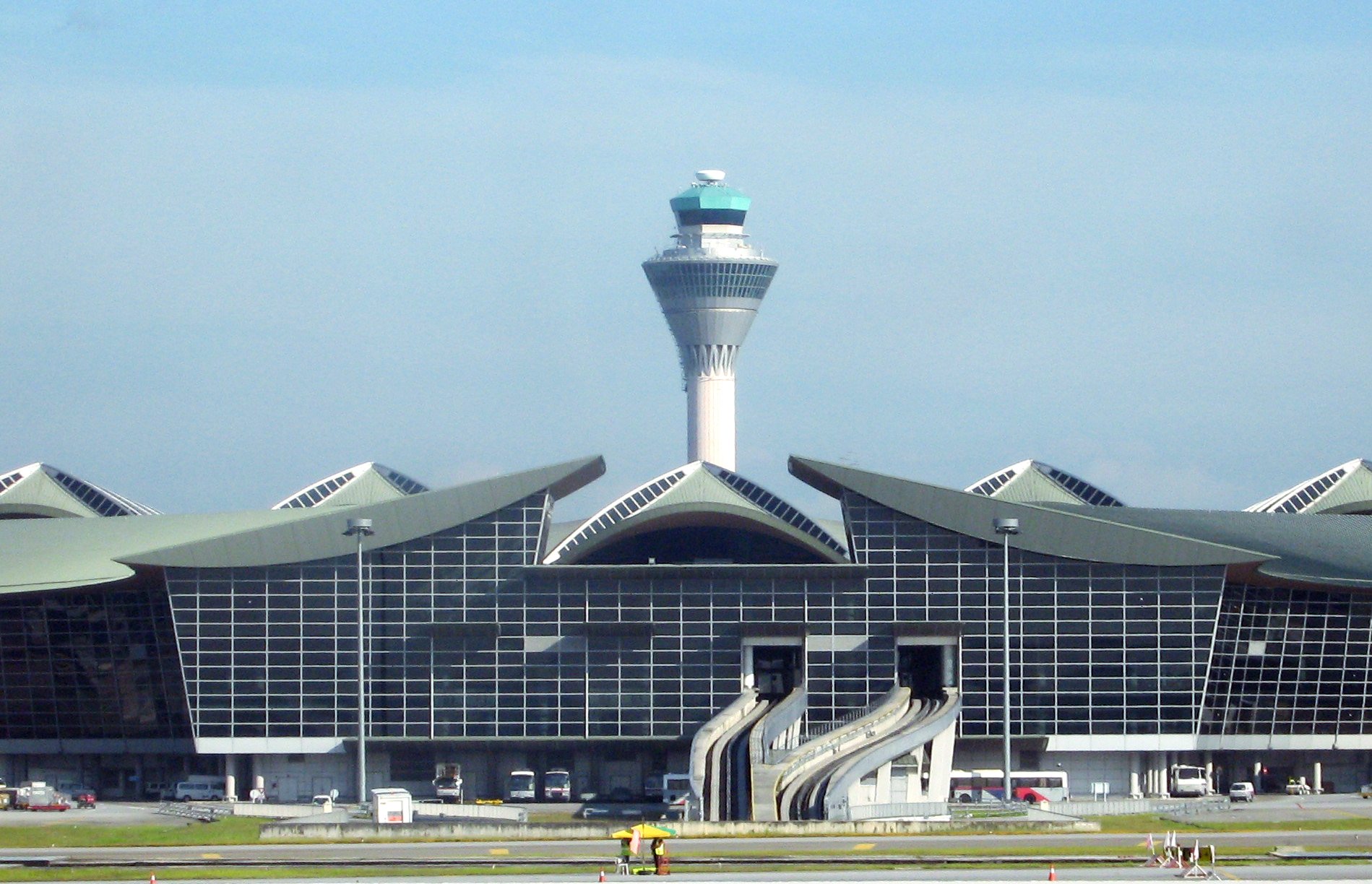
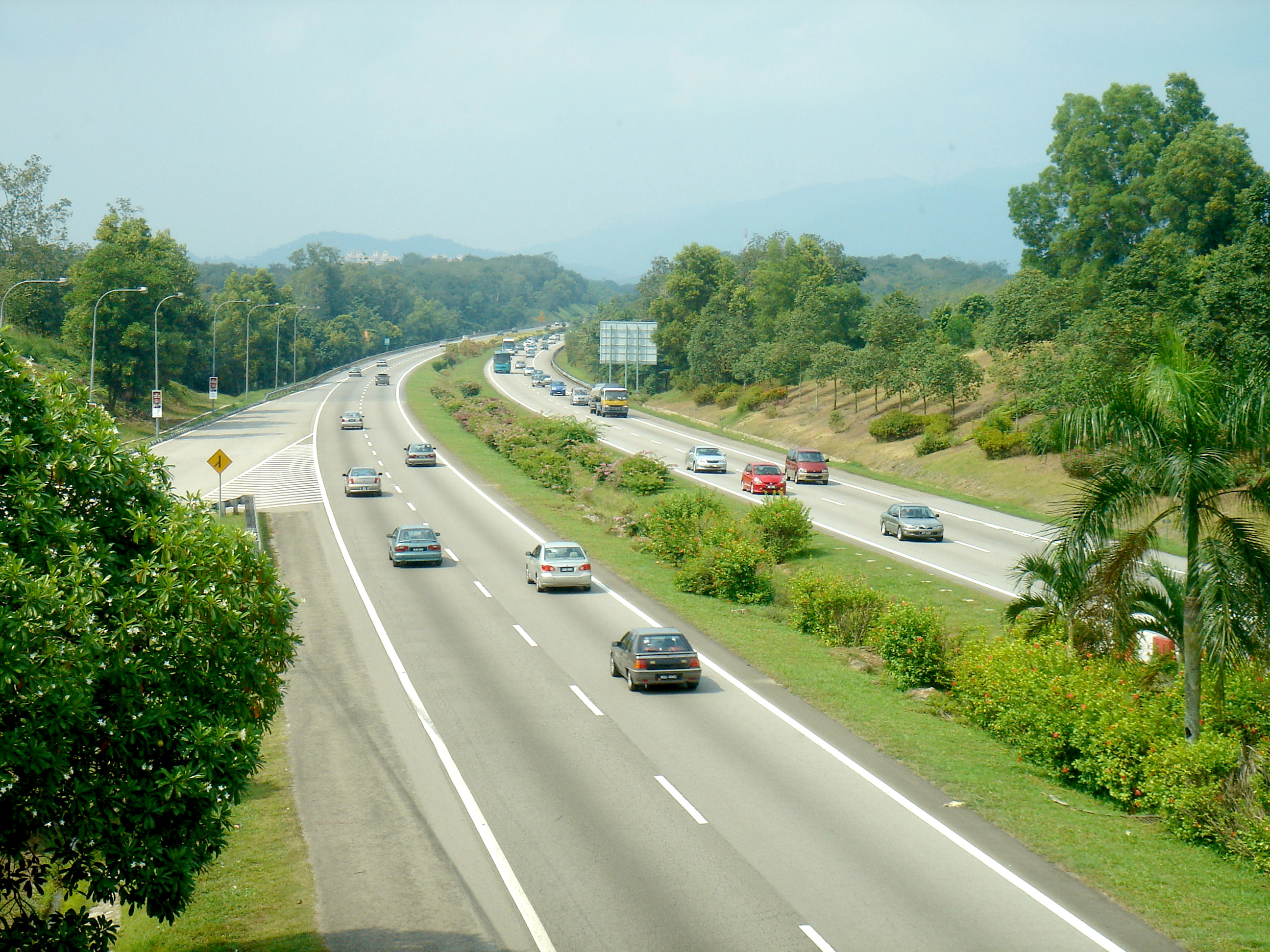
Malaysia has developed a relatively extensive and modern infrastructure network, particularly in Peninsular Malaysia, which has been a key factor in its economic development. However, disparities exist between the peninsula and East Malaysia.
- Transportation:**
- Roads:** Malaysia has a well-developed road network, especially in the peninsula, totaling over 148 K mile (238.82 K km) as of 2016. The North-South Expressway is a major toll highway that spans the length of Peninsular Malaysia, from the Thai border to Singapore. Other expressways connect major urban centers. The road network in Sabah and Sarawak is less developed and faces challenges due to terrain and vast distances, though efforts to improve it, such as the Pan-Borneo Highway project, are ongoing.
- Railways:** Keretapi Tanah Melayu Berhad (KTMB) operates the main railway lines in Peninsular Malaysia, including intercity services and commuter trains in the Klang Valley. The Electric Train Service (ETS) provides faster intercity travel on electrified double-tracked sections. In East Malaysia, the Sabah State Railway operates a limited line. Urban rail transit systems, including LRT (Light Rail Transit), MRT (Mass Rapid Transit), and monorail lines, serve Kuala Lumpur and the surrounding Klang Valley.
- Ports:** Malaysia has several major seaports. Port Klang, near Kuala Lumpur, and the Port of Tanjung Pelepas in Johor are among the busiest container ports in the world, leveraging Malaysia's strategic position on global shipping routes. Other important ports include Penang Port, Johor Port (Pasir Gudang), Kuantan Port, and Bintulu Port.
- Airports:** There are numerous airports across the country, including 6 international airports. Kuala Lumpur International Airport (KLIA) in Sepang is the main international gateway and a major regional hub. Other significant international airports are located in Penang, Kota Kinabalu, Kuching, Langkawi, and Senai (Johor Bahru). Domestic air travel is crucial for connecting Peninsular Malaysia with Sabah and Sarawak.
- Telecommunications:**
- Energy:**
- Water and Sanitation:**
Ongoing infrastructure development focuses on upgrading existing facilities, expanding networks to underserved areas (particularly in East Malaysia), improving urban public transport to reduce traffic congestion, and incorporating sustainable and environmentally friendly practices. However, large infrastructure projects sometimes face scrutiny regarding their environmental impact, cost-effectiveness, and benefit distribution.
6.5. Socio-economic Disparities
Despite Malaysia's overall economic progress, socio-economic disparities remain a significant and persistent feature of its society. These disparities exist across various dimensions, including inter-ethnic, intra-ethnic, urban-rural, and regional lines. Addressing these inequalities is crucial for achieving inclusive and sustainable development, and it aligns with the principles of social liberalism that emphasize equity and social justice.
- Inter-ethnic Economic Inequality:**
- Intra-ethnic Disparities:**
- Urban-Rural and Regional Disparities:**
- Causes and Contributing Factors:**
- Labor Rights:**
Addressing these disparities requires a multi-pronged approach that moves towards more needs-based rather than purely race-based affirmative action, strengthens social safety nets, invests in quality education and healthcare for all, promotes equitable regional development, ensures fair labor practices, and tackles issues of governance and corruption. A focus on empowering marginalized communities, regardless of ethnicity, and fostering inclusive economic growth is essential for building a more just and equitable Malaysian society.
7. Demographics
Malaysia is a multi-ethnic and multicultural country with a diverse population. Its demographic profile is shaped by indigenous populations, historical migrations, and modern societal trends. Key aspects include population size and growth, ethnic composition, language diversity, religious affiliations, and urbanization.
7.1. Population
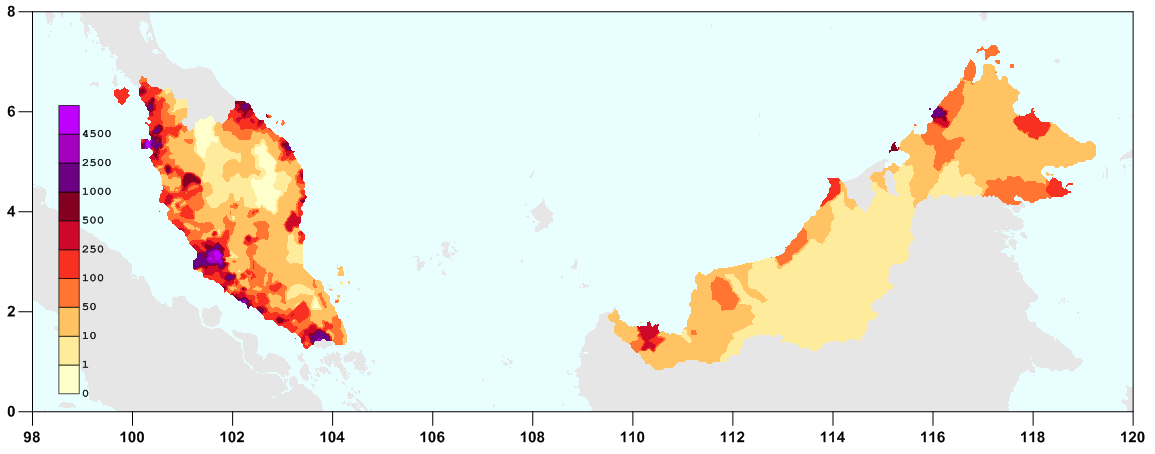

As of 2020, Malaysia's population was approximately 32.4 million people, making it the 42nd most populous country in the world. The population growth rate has been gradually declining but remains moderate. Population density is around 96 people per km2, though this varies significantly across regions, with higher densities in Peninsular Malaysia, particularly on the west coast, compared to the more sparsely populated East Malaysia.
A significant majority of the population (around 70%) resides in urban areas, reflecting ongoing urbanization trends. The Klang Valley, encompassing Kuala Lumpur and its surrounding areas, is the largest urban agglomeration.
- Ethnic Composition:**
Malaysian society is characterized by its ethnic diversity. The main ethnic groups are:
- Malays:** They form the largest ethnic group, making up over 50% of the citizen population. According to the Malaysian constitution, a Malay is defined as a person who professes Islam, habitually speaks the Malay language, and conforms to Malay customs.
- Other Bumiputera:** This category, along with Malays, constitutes the "Bumiputera" (sons of the soil) group, which accounts for about 69.7% of the population (2021 estimate including Malays). It includes various indigenous peoples of Peninsular Malaysia (the Orang Asli) and the diverse indigenous groups of Sabah and Sarawak, such as the Iban, Bidayuh, Orang Ulu, Kadazan-Dusun, and Bajau. Non-Malay Bumiputeras are the majority in Sarawak and form a very significant portion of Sabah's population.
- Chinese:** Malaysians of Chinese descent form the second-largest ethnic group, constituting around 23% of the population. They are descendants of immigrants who arrived mainly in the 19th and early 20th centuries and have historically played a significant role in the country's commerce and business sectors.
- Indians:** Malaysians of Indian descent make up about 7% of the population. The majority are Tamils, descendants of immigrants brought in by the British during the colonial era, primarily to work on plantations. Other Indian groups include Malayalees, Telugus, and Punjabis.
- Others:** This category includes Malaysians of other ancestries, such as Eurasians, Arabs, and Thais.
- Migration Status:**
- Migrant Workers:** Malaysia has a large population of migrant workers, estimated to be several million (both documented and undocumented). They come primarily from neighboring Southeast Asian countries like Indonesia, Bangladesh, Nepal, and Myanmar, and work in sectors such as construction, manufacturing, agriculture (plantations), and domestic service. The treatment and rights of migrant workers are significant social and human rights issues.
- Refugees and Asylum Seekers:** Malaysia hosts a substantial number of refugees and asylum seekers, though it is not a signatory to the 1951 Refugee Convention or its 1967 Protocol. Many are from Myanmar (including Rohingya), as well as from other countries. They often live in vulnerable conditions without legal status or access to formal work and education.
The ethnic and demographic makeup of Malaysia has profound implications for its politics, social policies, and cultural identity. Balancing the rights and interests of its diverse communities while fostering national unity remains a central challenge.
7.2. Languages
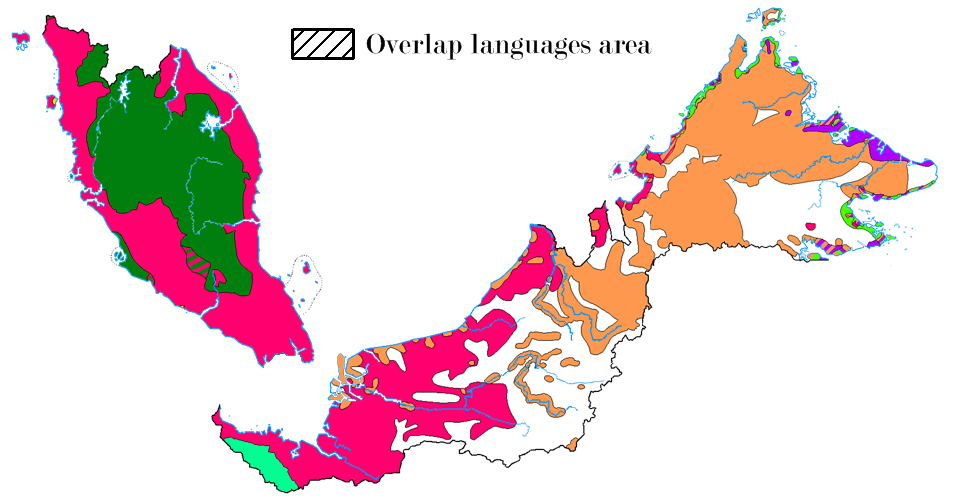
Malaysia is a multilingual country with a rich linguistic diversity reflecting its multi-ethnic population.
- Official Language:**
- Status of English:**
- Minority Ethnic Languages:**
- Chinese Languages/Dialects:** Malaysians of Chinese descent speak various Chinese dialects, reflecting their ancestral origins in southern China. The most common varieties include Hokkien, Cantonese, Mandarin, Hakka, Teochew, and Fuzhou dialect (Foochow). Mandarin is taught in Chinese vernacular schools and is increasingly used as a lingua franca among younger generations of Chinese Malaysians.
- Tamil:** Tamil is the most widely spoken Indian language in Malaysia, predominantly used by the majority of Malaysian Indians. Other Indian languages like Telugu, Malayalam, and Punjabi are also spoken by smaller communities.
- Thai:** Spoken by the Thai Malaysian community, primarily in the northern states bordering Thailand.
- Indigenous Languages:**
The multilingual environment is a hallmark of Malaysian society. Language policy, particularly in education and public life, often touches upon issues of ethnic identity and national unity. Promoting proficiency in the national language while respecting and preserving the linguistic heritage of minority and indigenous communities is a key challenge.
7.3. Religion
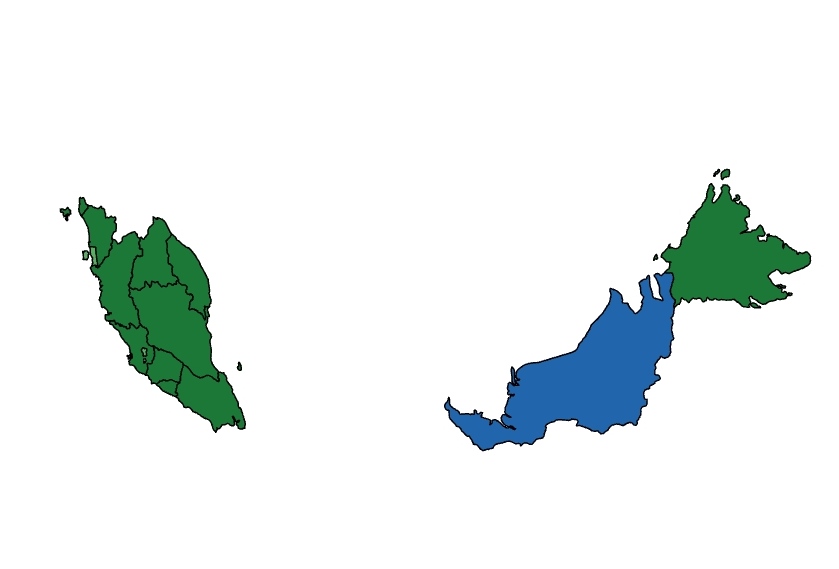
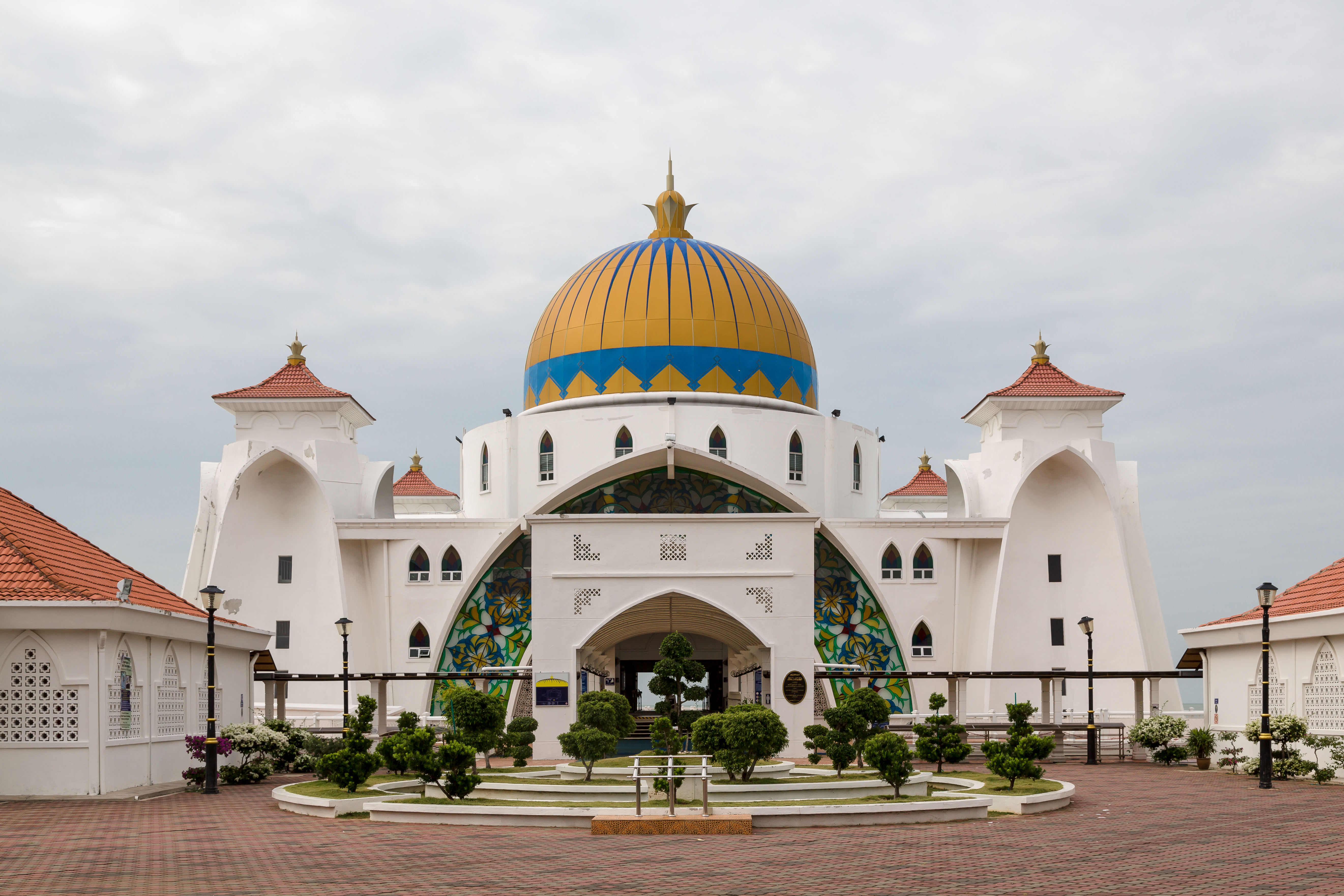
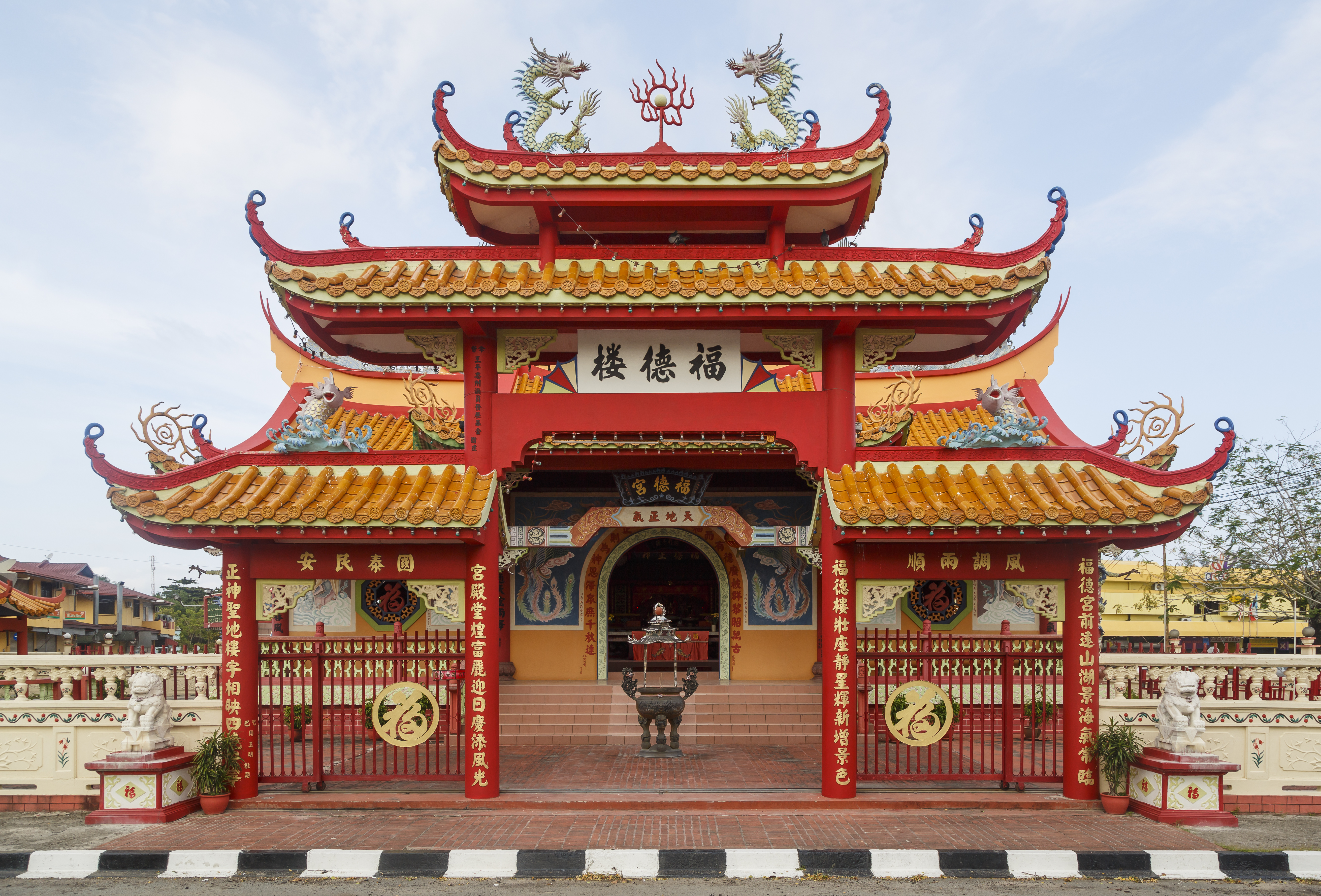
Malaysia is a multi-religious country, but Islam holds a special constitutional position. The Constitution of Malaysia declares Islam as the "religion of the Federation" but also guarantees freedom of religion for non-Muslims (Article 11). However, the practice and expression of this freedom, particularly for non-Muslims and dissenting Muslim voices, face certain limitations and societal pressures.
- Distribution of Adherents (based on the 2020 Population and Housing Census):**
- Islam:** Approximately 63.5% of the population are Muslims. Islam is predominantly practiced by the Malay ethnic group, who are constitutionally defined as Muslims. Sunni Islam of the Shafi`i school of jurisprudence is the dominant branch.
- Buddhism:** Around 18.7% of the population are Buddhists, primarily practiced by Malaysians of Chinese descent. Mahayana Buddhism is the most common form.
- Christianity:** About 9.1% of the population are Christians. This includes various denominations among Chinese, Indian, and significantly, many indigenous Bumiputera communities in East Malaysia (Sabah and Sarawak), where Christianity is a major religion.
- Hinduism:** Approximately 6.1% of the population are Hindus, predominantly practiced by Malaysians of Indian descent, mostly Tamils.
- Chinese Folk Religions:** Around 1.3% practice traditional Chinese religions, including Taoism, Confucianism, and ancestral worship, often alongside Buddhism.
- Others:** A small percentage adhere to other faiths like Sikhism, Jainism, or indigenous animistic beliefs.
- No Religion/Unknown:** About 2.7% declared no religion or did not provide information.
The states of Sarawak, Penang, and the federal territory of Kuala Lumpur have non-Muslim majorities or pluralities.
- Religion and Society:**
- Syariah Courts:** Muslims in Malaysia are subject to Syariah (Islamic) courts in personal and family matters such as marriage, divorce, inheritance, and apostasy. The jurisdiction of Syariah courts is limited to Muslims and does not cover criminal offenses under federal law (except for certain religious offenses). The relationship and occasional jurisdictional conflicts between the civil courts and Syariah courts have been a source of legal and social debate, especially in cases involving religious conversion.
- Freedom of Religion Issues:** While constitutionally guaranteed, freedom of religion faces challenges. Proselytizing to Muslims by non-Muslims is restricted. Converting out of Islam (apostasy) is legally very difficult and in some states, a criminal offense for Muslims. There have been controversies over issues such as the use of the word "Allah" by non-Muslims, the construction of non-Muslim places of worship, and the rights of religious minorities.
- Rise of Religious Conservatism:** There has been a noticeable trend towards greater Islamic conservatism in public life and politics over recent decades, influencing social norms, laws, and inter-religious relations. This has led to concerns among some non-Muslims and progressive Muslims about the narrowing of secular spaces and individual freedoms.
The interplay between religion, ethnicity, and politics is a complex and often sensitive aspect of Malaysian society. Maintaining religious harmony and ensuring equitable treatment for all religious communities while upholding the constitutional framework are ongoing challenges. From a social liberalism perspective, strengthening protections for freedom of religion and belief for all, including religious minorities and those with no religion, and ensuring that state policies are non-discriminatory, are crucial.
7.4. Education
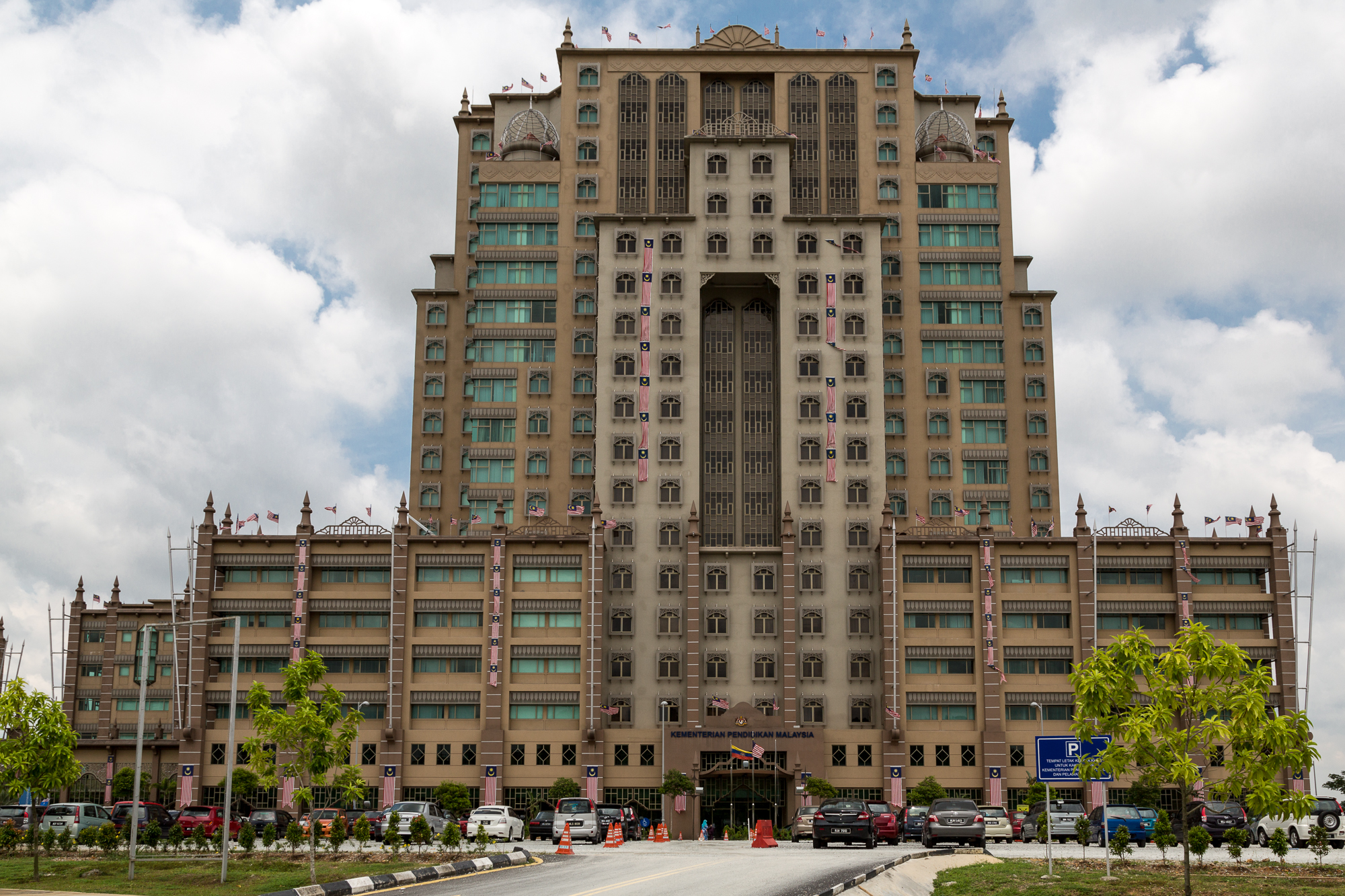
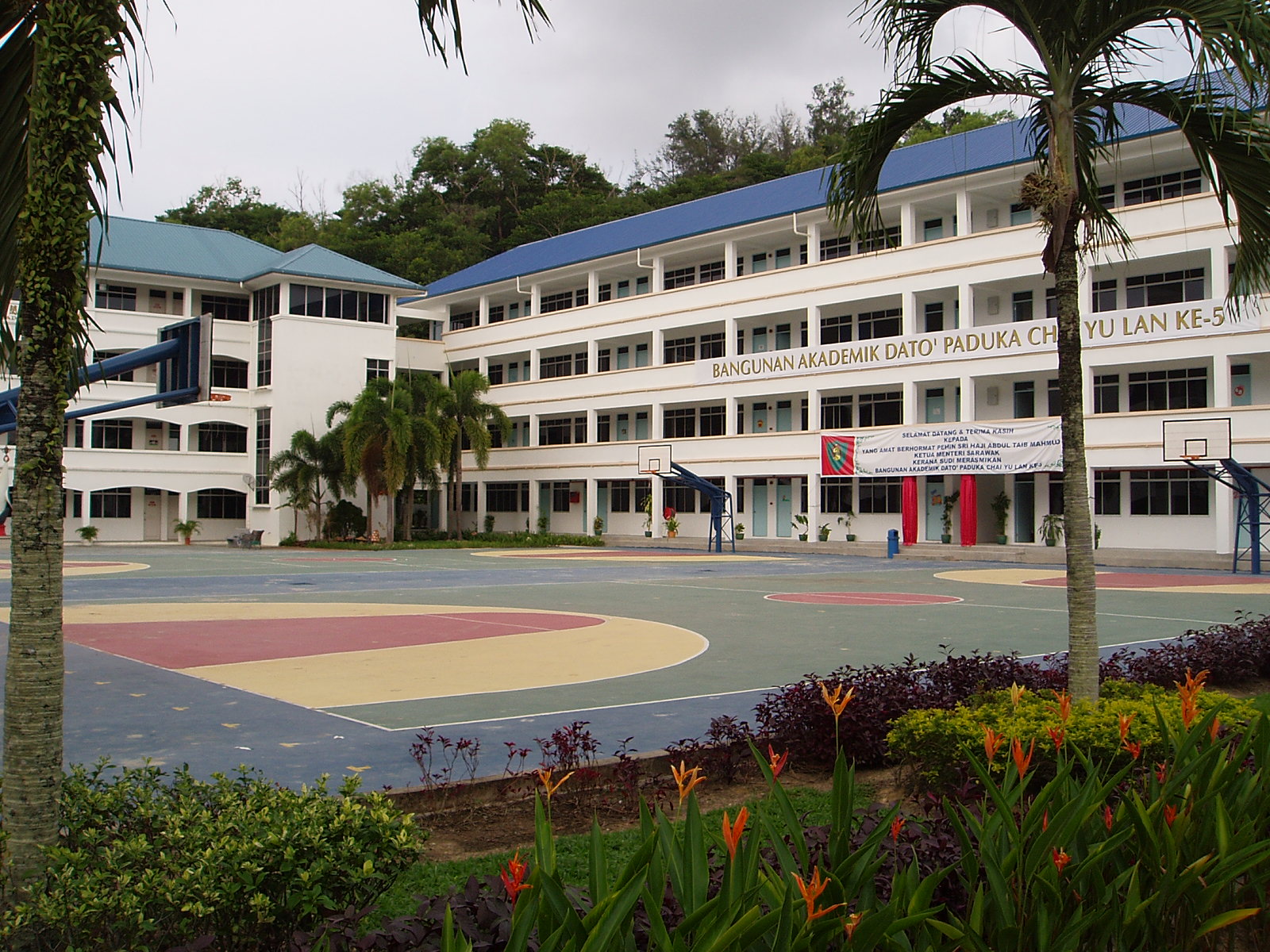
Malaysia's education system is overseen primarily by the federal Ministry of Education, with higher education falling under the Ministry of Higher Education. The system includes non-compulsory kindergarten, six years of compulsory primary education, and five years of optional secondary education, followed by post-secondary and tertiary education.
- Educational Structure:**
1. **Pre-school Education:** Non-compulsory kindergarten education is available for children aged 4-6, provided by both government and private institutions.
2. **Primary Education (Sekolah Rendah):** Compulsory for six years, typically starting at age 7. There are two main types of government-funded primary schools:
- National Schools (Sekolah Kebangsaan):** Use Malay as the medium of instruction.
- Vernacular Schools (Sekolah Jenis Kebangsaan):** Use Chinese (SJKC) or Tamil (SJKT) as the medium of instruction. Malay and English are compulsory subjects in all primary schools.
At the end of primary education, students sit for the Primary School Achievement Test (Ujian Pencapaian Sekolah Rendah, UPSR), although this has been recently abolished and replaced with school-based assessments.
3. **Secondary Education (Sekolah Menengah):** Typically for five years, divided into Lower Secondary (Forms 1-3) and Upper Secondary (Forms 4-5). National secondary schools (Sekolah Menengah Kebangsaan, SMK) use Malay as the main medium of instruction. Students sit for the Form Three Assessment (Pentaksiran Tingkatan Tiga, PT3) at the end of Form 3 (this has also seen recent reforms). At the end of Form 5, students take the Malaysian Certificate of Education (Sijil Pelajaran Malaysia, SPM) examination, which is a major school-leaving and university entrance qualification.
There are also Chinese Independent High Schools, which offer a curriculum primarily in Chinese and prepare students for the Unified Examination Certificate (UEC).
4. **Post-Secondary Education:** After SPM, students can pursue various pathways:
- Form Six (Tingkatan Enam):** A two-year pre-university program in selected secondary schools, leading to the Malaysian Higher School Certificate (Sijil Tinggi Persekolahan Malaysia, STPM).
- Matriculation (Program Matrikulasi):** A one or two-year pre-university program run by the Ministry of Education. Quotas for matriculation places, often favoring Bumiputera students, have been a contentious issue regarding equity.
5. **Higher Education:** Includes public and private universities, university colleges, polytechnics, and community colleges offering diploma, bachelor's, master's, and doctoral degrees. Major public universities include the University of Malaya, Universiti Kebangsaan Malaysia, and Universiti Sains Malaysia. There is also a growing private higher education sector, including branch campuses of foreign universities.
- Multilingual Education Environment:**
The existence of national and vernacular schools at the primary level reflects Malaysia's multilingual heritage. The role of English in education, particularly as a medium of instruction for subjects like Science and Mathematics, has been a subject of policy changes and public debate over the years, balancing the need for proficiency in the national language, English as an international language, and the preservation of mother tongues.
- Access and Equity:**
Ensuring equitable access to quality education for all, regardless of socio-economic background, ethnicity, or geographical location (urban-rural, Peninsular-East Malaysia), is a key challenge. The Bumiputera affirmative action policies extend to education, with quotas and preferential treatment in admissions to public universities and scholarship awards. While intended to address historical imbalances, these policies have raised concerns about meritocracy and equal opportunity for non-Bumiputera students and even among different Bumiputera groups.
Focusing on improving the quality of teaching, infrastructure in rural and underserved schools, and providing targeted support for students from disadvantaged backgrounds are crucial for achieving greater educational equity. The curriculum also aims to instill national unity and values, but navigating cultural sensitivities in a diverse society remains a delicate balancing act.
7.5. Health
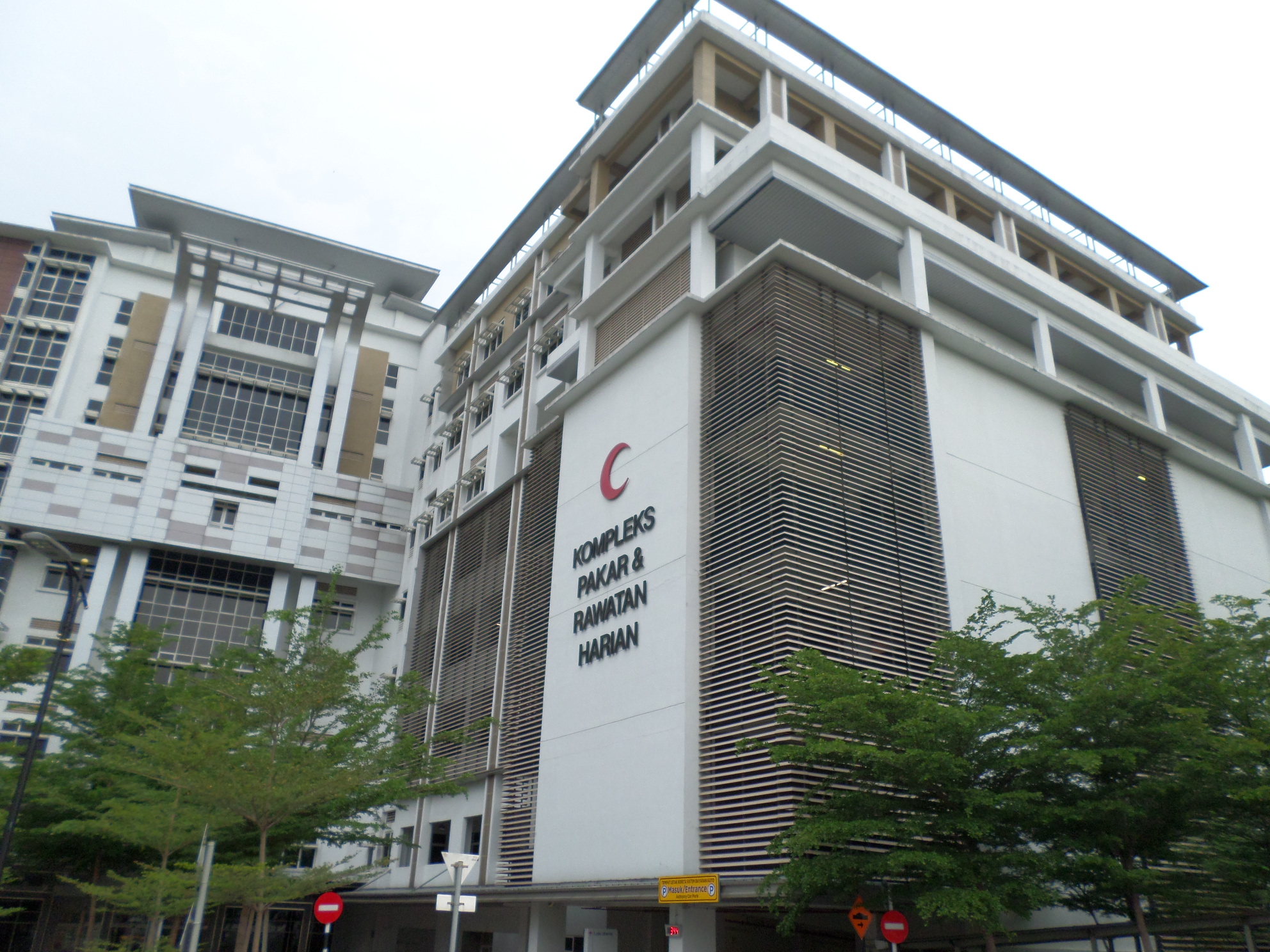
Malaysia has a two-tier healthcare system consisting of a government-led and funded universal public healthcare sector and a co-existing private healthcare sector. The Ministry of Health is the main provider and regulator of healthcare services. Overall, the healthcare system is considered to be among the most developed in Asia, and it contributes to a growing medical tourism industry.
- National Health Status:**
- Life Expectancy:** In 2020, the overall life expectancy at birth was approximately 76 years (74 for males and 78 for females).
- Infant Mortality Rate:** The infant mortality rate was around 7 deaths per 1,000 live births in 2020.
- Total Fertility Rate:** The total fertility rate was about 2.0 births per woman in 2020, slightly below the replacement level.
- Disease Burden:** Malaysia faces a double burden of disease, with a rise in non-communicable diseases (NCDs) such as cardiovascular diseases (coronary artery disease being a principal cause of death), diabetes, cancer, and respiratory illnesses, alongside some communicable diseases. Pneumonia is also a significant cause of death.
- Healthcare Service System:**
- Public Healthcare:** The public sector provides comprehensive healthcare services through an extensive network of government hospitals, health clinics (Klinik Kesihatan), and rural clinics (Klinik Desa). These services are heavily subsidized by the government, making them highly affordable and accessible to the general population. Primary healthcare is a focus, with services for maternal and child health, immunizations, and treatment of common illnesses.
- Private Healthcare:** The private sector offers an alternative, often with shorter waiting times and more personalized services, but at a higher cost. It includes private hospitals, specialist clinics, and general practitioner (GP) clinics. Many Malaysians with higher incomes or private health insurance utilize private healthcare services.
- Healthcare Financing:** The public healthcare system is primarily financed through general taxation. Out-of-pocket payments and private health insurance are common for those using private sector services. Total healthcare expenditure was about 3.83% of GDP in 2019.
- Medical Tourism:**
Malaysia has actively promoted itself as a destination for medical tourism, attracting international patients with its relatively high-quality medical services, modern facilities, English-speaking healthcare professionals, and competitive costs compared to Western countries.
- Challenges and Current Affairs:**
- Rising NCDs:** Addressing the growing prevalence of NCDs through public health campaigns, lifestyle interventions, and improved chronic disease management is a major priority.
- Healthcare Workforce:** Ensuring an adequate supply and equitable distribution of healthcare professionals, especially specialists in rural and underserved areas, remains a challenge.
- Aging Population:** Like many countries, Malaysia is experiencing an aging population, which will place increasing demands on the healthcare system.
- Quality and Equity:** While the overall standard of care is good, disparities in access and quality of healthcare services exist between urban and rural areas, and between Peninsular Malaysia and East Malaysia.
- Mental Health:** There is growing awareness of the need to improve mental health services and reduce stigma associated with mental illness.
- Health Hazards:** Traffic accidents are a significant public health concern, with Malaysia having a relatively high traffic fatality rate. Smoking also remains a major health issue.
The Malaysian government continues to invest in strengthening the healthcare system, focusing on improving accessibility, quality, and efficiency of services, as well as promoting public health and wellness.
8. Culture
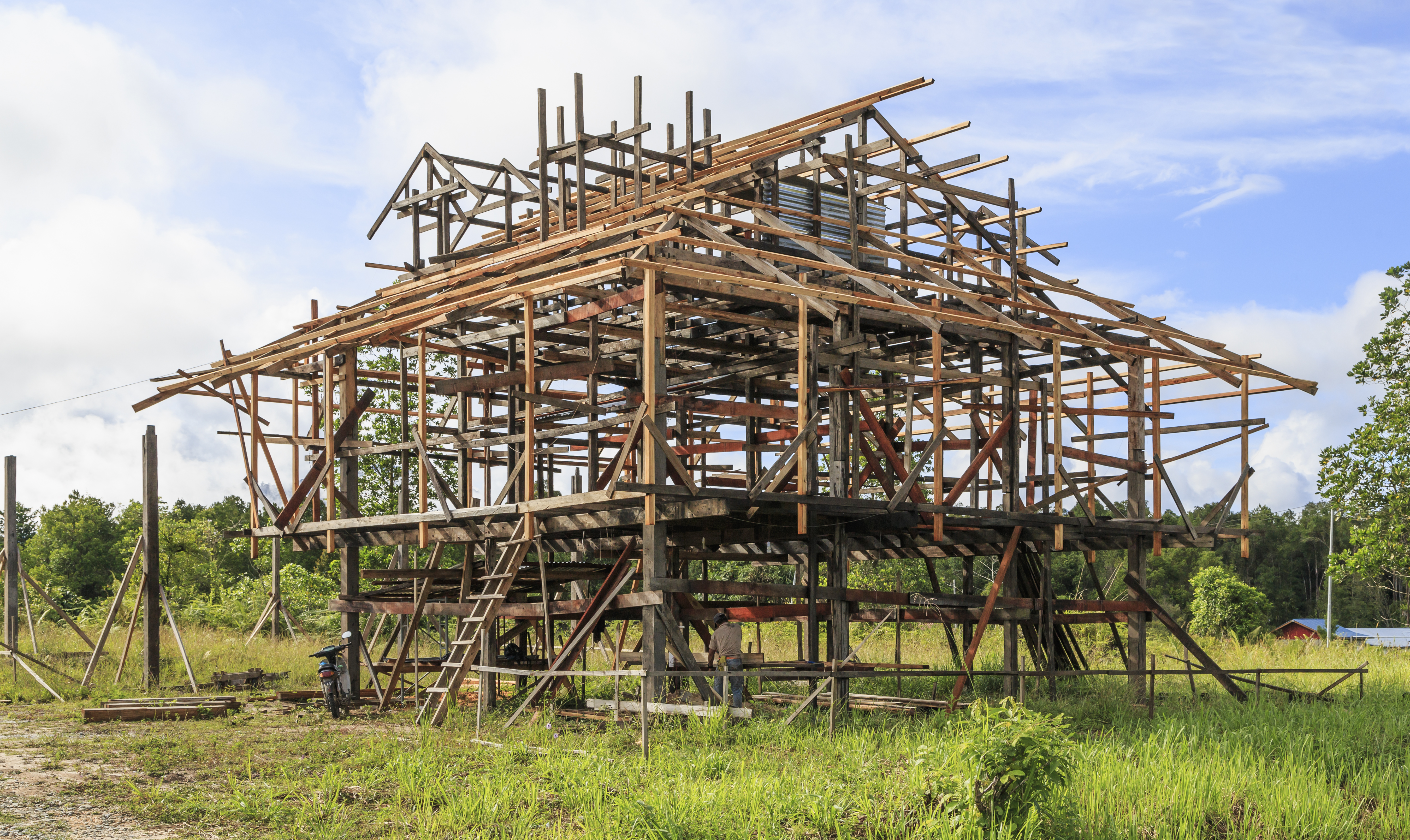
Malaysian culture is a vibrant mosaic reflecting its multi-ethnic, multicultural, and multilingual society. The primary ethnic groups - Malays, Chinese, and Indians - along with numerous indigenous communities, particularly in Sabah and Sarawak, have each contributed to the nation's rich cultural tapestry. Historical influences from Arab, Persian, British, and other Southeast Asian cultures have also shaped Malaysian traditions. In 1971, the government formulated a "National Cultural Policy" which emphasized that Malaysian culture must be based on the indigenous cultures of the region, incorporate suitable elements from other cultures, and that Islam must play a significant role. This policy, and its emphasis on Malay language and culture, has sometimes been a point of contention for non-Malay communities who advocate for greater recognition of their cultural contributions and freedoms.
8.1. Arts
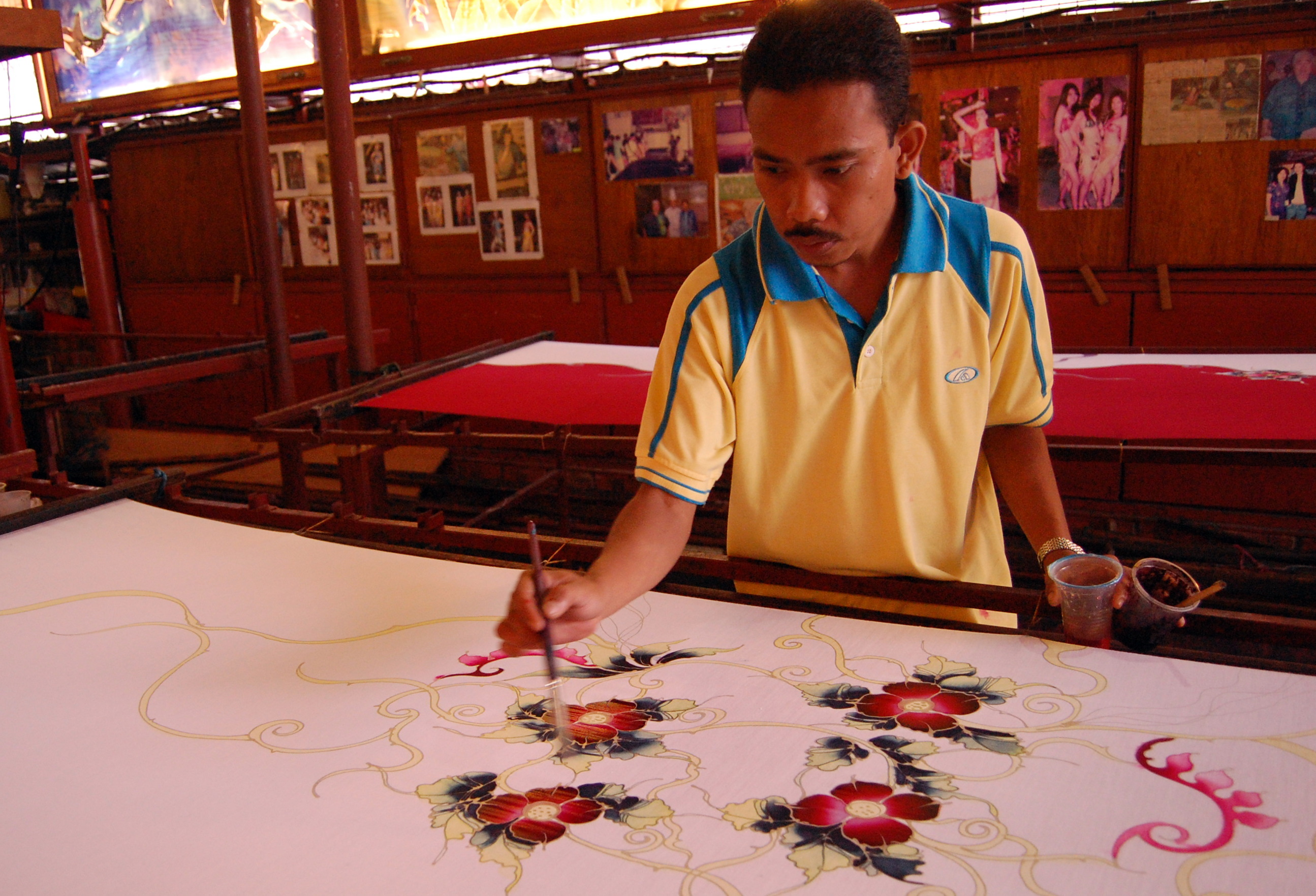
Traditional Malaysian art is diverse, with distinct forms originating from its various ethnic communities.
- Sculpture and Carving:** Wood carving is a prominent art form, especially among Malay and indigenous communities. Intricate carvings adorn traditional Malay houses, boats, and items like the kris (a traditional dagger). Indigenous groups in East Malaysia, such as the Iban and Orang Ulu, are known for their elaborate wooden masks, shields, and statues, often with spiritual or ceremonial significance.
- Textiles:**
- Batik:** A wax-resist dyeing technique applied to fabric, Malaysian batik is characterized by its vibrant colors and floral or geometric motifs. It is used for clothing (sarongs, shirts) and decorative items.
- Songket:** A luxurious hand-woven fabric, traditionally made of silk or cotton, intricately patterned with gold or silver threads. Songket is worn during important ceremonies like weddings and royal occasions.
- Pua Kumbu:** A sacred ikat-dyed textile woven by Iban women in Sarawak, featuring complex patterns with symbolic meanings.
- Other traditional textiles include Tenun Pahang (woven silk from Pahang) and various forms of embroidery and beadwork.
- Silversmithing:** Kelantan is particularly known for its fine silverwork, producing items like traditional jewelry, betel nut sets, and decorative objects.
- Performing Arts:**
- Music:** Traditional Malay music often features percussion instruments, with the gendang (drum) being central. Ensembles like the gamelan (influenced by Indonesian traditions) and nobat (royal court music) are important. Dikir Barat is a lively form of group singing with synchronized movements, popular in Kelantan. East Malaysian indigenous music often involves gongs, such as in kulintang ensembles.
- Dance:** Traditional Malay dances include the graceful Zapin (with Arab influences) and the lively Joget. Chinese Malaysians perform lion and dragon dances, especially during festivals. Indian Malaysians practice classical Indian dances like Bharatanatyam. Indigenous communities have their own unique ritual and celebratory dances, such as the Ngajat of the Iban and the Sumazau of the Kadazan-Dusun.
- Theatre:** Traditional Malay theatre forms include Wayang Kulit (shadow puppet theatre), Mak Yong (a dance-drama with royal origins, recognized by UNESCO), and Bangsawan (Malay opera).
- Contemporary Arts:**
Malaysia has a growing contemporary arts scene, with artists exploring various mediums, including painting, sculpture, installation art, and new media. Galleries and art institutions in major cities like Kuala Lumpur showcase both traditional and contemporary works. Malaysian artists often draw inspiration from their cultural heritage while engaging with modern and global themes. Key figures in modern Malaysian art include Ibrahim Hussein, Lat (Mohammad Nor Khalid) (cartoonist), and Redza Piyadasa. The development of contemporary arts is supported by government initiatives, private galleries, and arts festivals, though artists sometimes navigate issues of censorship and freedom of expression.
8.2. Cuisine

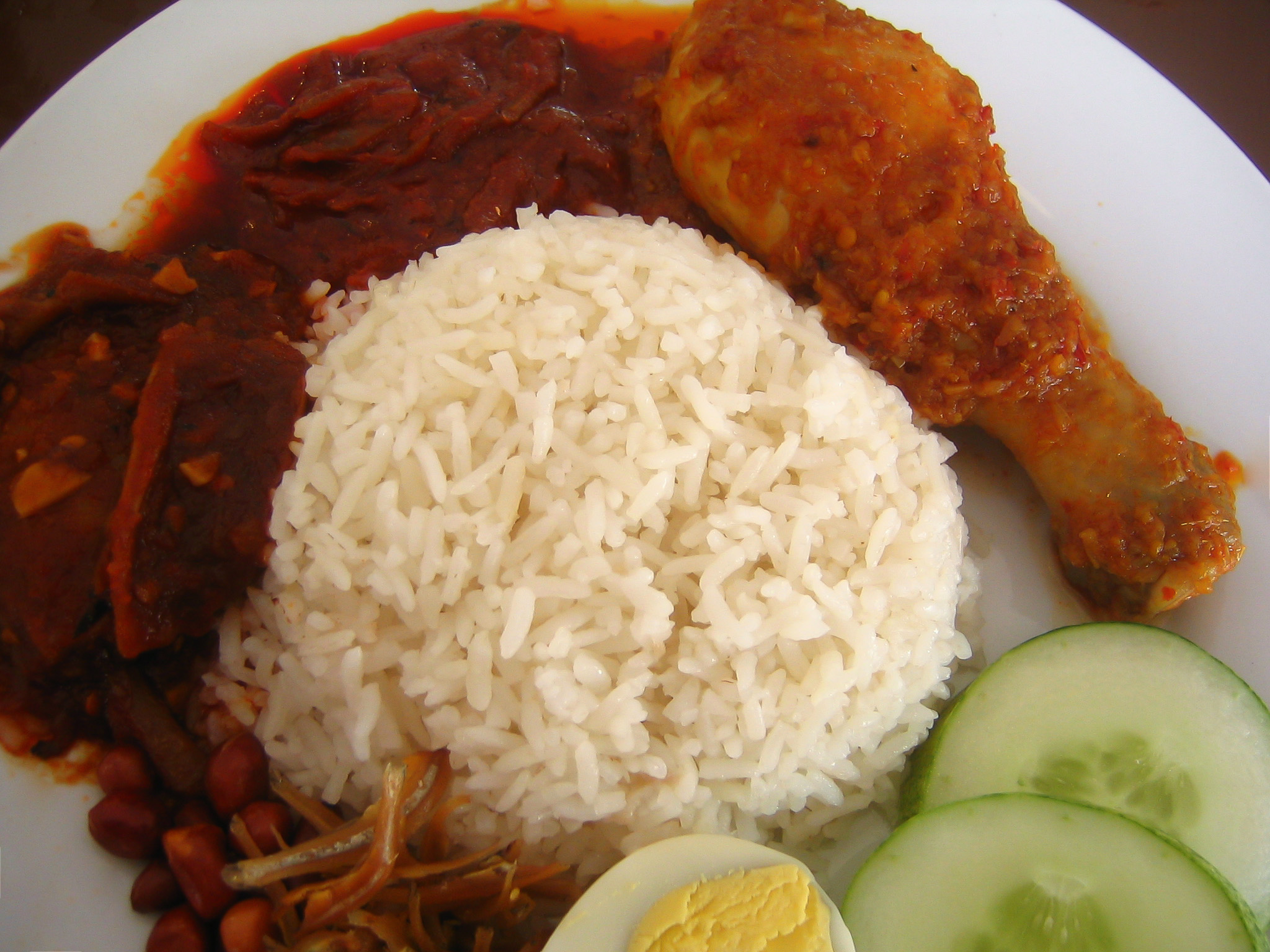
Malaysian cuisine is a vibrant fusion that reflects the country's multi-ethnic makeup and historical trade connections. It combines Malay, Chinese, Indian, Indonesian, Thai, and indigenous Bornean influences, resulting in a rich and diverse culinary landscape. Rice (nasi) is a staple, and spices, herbs, and chili are common ingredients, creating complex and aromatic flavors.
- Representative Malaysian Foods:**
- Nasi Lemak:** Often considered the national dish, it consists of rice cooked in coconut milk and pandan leaf, served with sambal (chili paste), fried anchovies (ikan bilis), roasted peanuts, cucumber slices, and a hard-boiled or fried egg. It can also be accompanied by various side dishes like chicken curry or beef rendang.
- Satay:** Skewered and grilled meat (chicken, beef, or lamb) marinated in spices, served with a flavorful peanut sauce, cucumber, onions, and compressed rice cakes (ketupat).
- Roti Canai:** A popular Indian-influenced flatbread, often served with dhal (lentil curry) or other curries. It's a common breakfast or supper dish. Variations include roti telur (with egg) and roti tisu (a thin, crispy version).
- Laksa:** A spicy noodle soup that varies significantly by region. Common types include:
- Assam Laksa: A sour, fish-based broth with thick rice noodles, popular in Penang.
- Curry Laksa: A coconut milk-based curry broth with noodles, often containing chicken, tofu puffs, shrimp, and bean sprouts.
- Sarawak Laksa: A distinct version from Sarawak with a prawn and chicken-based broth, flavored with a unique spice paste.
- Char Kway Teow:** Stir-fried flat rice noodles with shrimp, cockles, bean sprouts, chives, egg, and soy sauce, often cooked in pork lard (though halal versions are widely available).
- Hokkien Mee:** This name refers to different dishes depending on the region. In Kuala Lumpur, it's thick yellow noodles braised in dark soy sauce with pork, squid, and vegetables. In Penang, it's a prawn-based noodle soup.
- Rendang:** A slow-cooked dry curry, typically made with beef (rendang daging) or chicken (rendang ayam), rich in spices and coconut milk.
- Nasi Kandar:** Originating from Penang, it's steamed rice served with a variety of curries and side dishes chosen by the customer.
- Bak Kut Teh:** A pork rib soup (non-halal) simmered in a complex broth of herbs and spices, popular among the Chinese community.
- Fusion of Diverse Ethnic Cuisines:**
The intermingling of cultures has led to unique fusion cuisines like Peranakan (Nyonya) cuisine, which blends Chinese ingredients with Malay spices and cooking techniques, resulting in dishes like laksa lemak, ayam pongteh (chicken and fermented soybean stew), and various colorful kuih (cakes/desserts). Mamak cuisine, developed by Indian Muslims, features dishes like nasi kandar, mee goreng Mamak (Mamak-style fried noodles), and roti canai.
- Regional Culinary Specialties:**
Different states and regions in Malaysia boast their own culinary specialties. For example:
- Penang is famous for its street food, including Assam Laksa, Char Kway Teow, and Hokkien Mee.
- Ipoh is known for Ipoh Hor Fun (flat rice noodles in chicken and prawn broth) and bean sprout chicken.
- Kelantan offers dishes like Nasi Kerabu (blue-colored rice with herbs and condiments) and Ayam Percik (grilled chicken with spicy coconut gravy).
- Sarawak is renowned for Sarawak Laksa and Kolo Mee (dry noodles).
- Sabah features dishes like Hinava (raw fish salad) and various seafood specialties.
Malaysian food is often enjoyed at hawker stalls, food courts, and coffee shops (kopitiam), reflecting a vibrant street food culture.
8.3. Sports
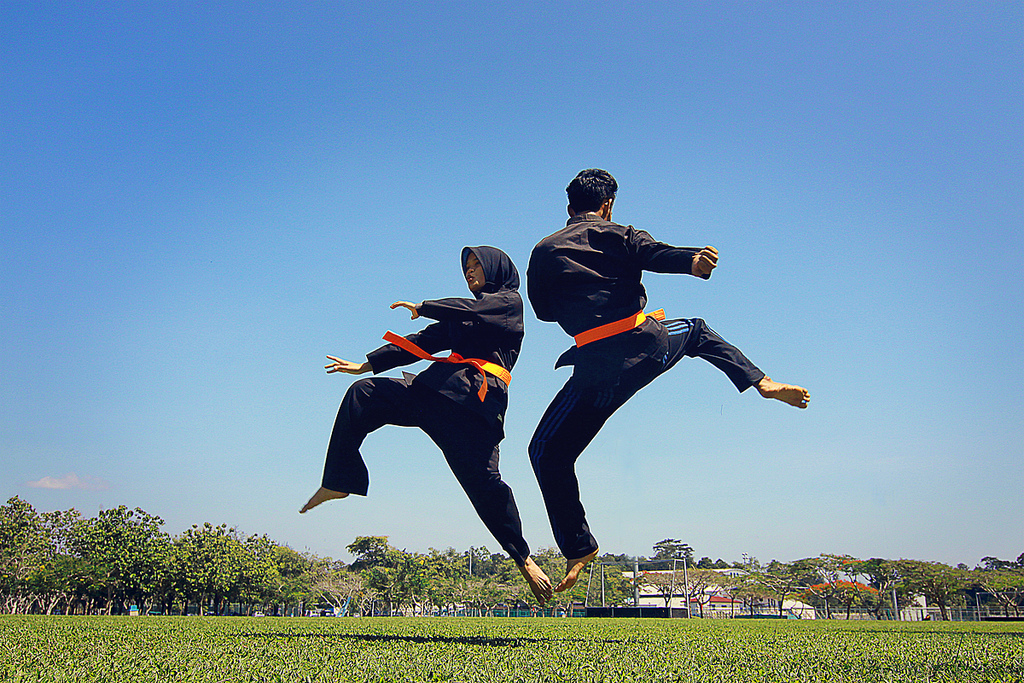
Sports are popular in Malaysia, with a range of activities enjoyed at both recreational and competitive levels. The government supports sports development through various agencies and initiatives.
- Popular Sports:**
- Football (Soccer):** The most popular sport in the country. The Malaysia Super League is the top professional league, and the national team competes in regional and international tournaments.
- Badminton:** Malaysia has a strong tradition in badminton and has produced many world-class players, particularly in men's singles and doubles. It is a source of national pride, and Malaysia has won multiple Olympic medals in this sport. The Thomas Cup (men's world team championship) has been won by Malaysia on several occasions.
- Sepak Takraw:** A traditional Southeast Asian sport played with a rattan ball, involving players using their feet, knees, chest, and head to hit the ball over a net. It is popular at community and competitive levels.
- Field Hockey:** Malaysia has a competitive men's national field hockey team that participates in international events like the World Cup and the Olympics.
- Squash:** Malaysia has produced internationally successful squash players, including former world number one Nicol David.
- Bowling (Ten-pin):** Popular recreationally and competitively, with Malaysian bowlers achieving success in international competitions.
- Motorsports:** The Sepang International Circuit previously hosted the Malaysian Grand Prix (Formula One) and continues to host other motorsport events, including MotoGP.
- Silat:** A collective term for a class of indigenous martial arts from the Malay Archipelago. Silat Melayu is practiced for self-defense, sport, and cultural preservation.
- Major Sporting Events Hosted:**
- Participation in International Competitions:**
Sports development is seen as a way to promote national unity, healthy lifestyles, and international prestige. There is a focus on grassroots development as well as elite athlete training programs. Traditional sports like Silat also continue to be practiced and promoted.
8.4. Media

The media landscape in Malaysia includes print, broadcast, and online platforms. It reflects the country's multi-ethnic and multilingual nature, but also operates within a framework of media laws and regulations that have historically imposed certain restrictions on freedom of the press.
- Newspapers:**
- Broadcasting:**
- Television:** Radio Televisyen Malaysia (RTM) is the state-owned public broadcaster, operating several TV channels. Private television networks like Media Prima (owning channels such as TV3, NTV7, 8TV, TV9) and Astro (a satellite pay-TV operator) are major players.
- Radio:** RTM also operates numerous national and regional radio stations. Private radio stations, many owned by companies like Astro Radio or Media Prima Audio, offer a variety of formats and languages.
- Online Media:**
- Freedom of the Press:**
- Characteristics of the Media Environment:**
8.5. Holidays and Festivals
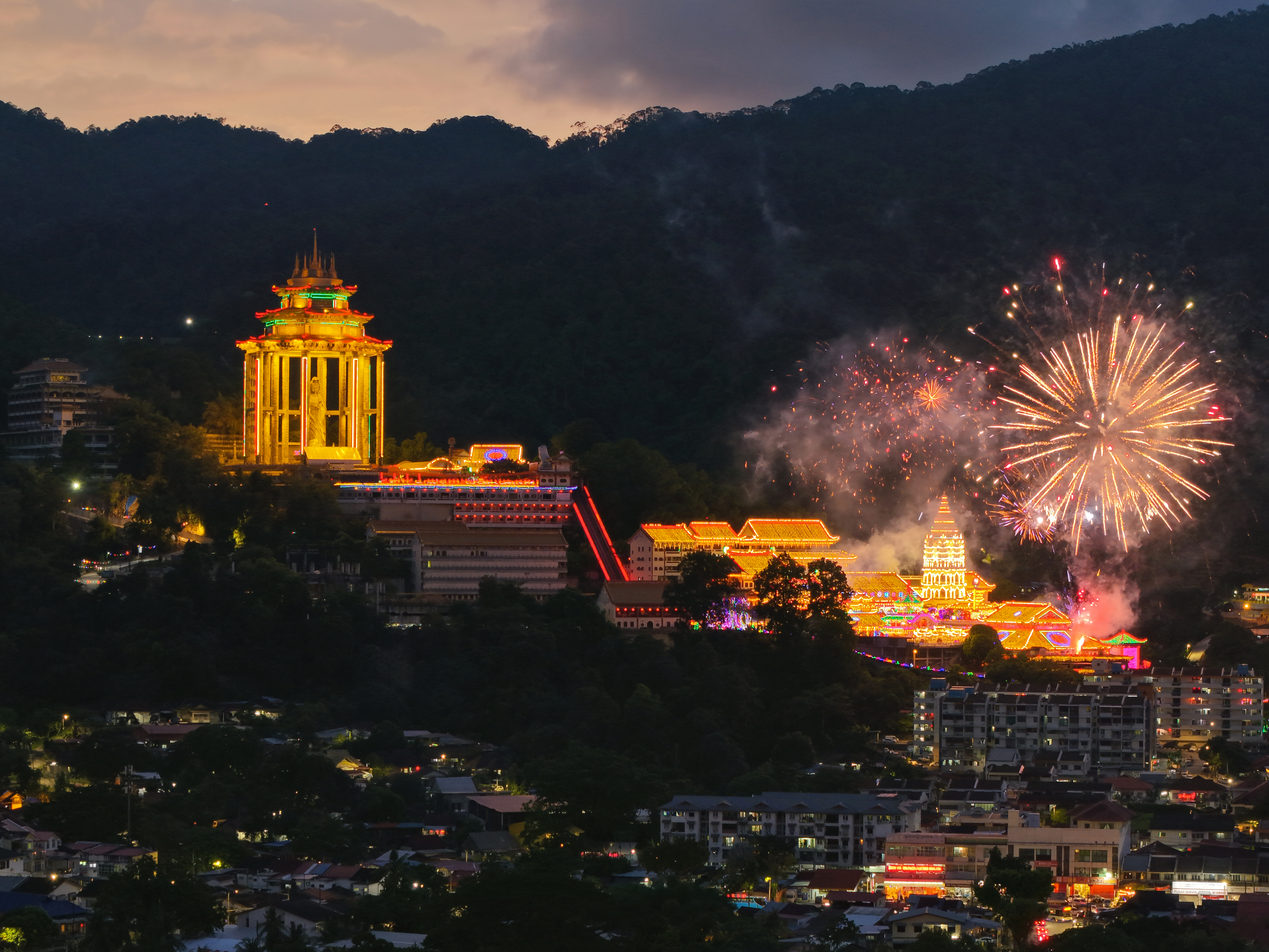
Malaysians observe a variety of holidays and festivals throughout the year, reflecting the country's multicultural and multi-religious society. Some are federally gazetted public holidays, while others are specific to individual states or celebrated by particular ethnic or religious communities. The "open house" tradition, where Malaysians of different backgrounds visit each other's homes during festive occasions, is a unique aspect of these celebrations, promoting inter-ethnic harmony.
- Major National Public Holidays:**
- Hari Merdeka (Independence Day):** Celebrated on August 31st to commemorate the independence of the Federation of Malaya from British rule in 1957.
- Malaysia Day:** Celebrated on September 16th to commemorate the formation of Malaysia in 1963, when Malaya, North Borneo (Sabah), Sarawak, and Singapore joined together.
- Labour Day:** Observed on May 1st.
- King's Birthday:** Celebrated on the first Monday of June (date may vary).
- Prophet Muhammad's Birthday (Maulidur Rasul):** An Islamic holiday commemorating the birth of Prophet Muhammad.
- Key Ethnic and Religious Festivals (many are public holidays):**
- Hari Raya Aidilfitri (Eid al-Fitr):** A major Islamic festival marking the end of Ramadan, the month of fasting. It is a time for prayers, feasting, visiting family and friends, and seeking forgiveness. Also known as Hari Raya Puasa.
- Hari Raya Aidiladha (Eid al-Adha):** An Islamic festival commemorating Prophet Ibrahim's willingness to sacrifice his son, and the end of the Hajj pilgrimage. Also known as Hari Raya Haji or Hari Raya Korban.
- Chinese New Year:** A significant festival celebrated by the Chinese community, usually lasting for 15 days. It involves family reunions, traditional foods, lion dances, and the giving of ang pow (red envelopes with money).
- Deepavali (Diwali):** The "Festival of Lights," celebrated by Hindus. It symbolizes the victory of light over darkness and good over evil, involving prayers, feasting, and lighting of oil lamps.
- Wesak Day:** Commemorates the birth, enlightenment, and passing of Gautama Buddha, celebrated by Buddhists with prayers, offerings, and acts of charity.
- Christmas:** Celebrated by Christians on December 25th.
- Thaipusam:** A Hindu festival dedicated to Lord Murugan, celebrated primarily by the Tamil community. It involves elaborate pilgrimages, often with devotees carrying kavadi (burdens) as acts of penance or thanksgiving. The celebration at Batu Caves near Kuala Lumpur is particularly large.
- Gawai Dayak:** A harvest festival celebrated by the Dayak communities (especially Iban and Bidayuh) in Sarawak, typically on June 1st and 2nd. It involves traditional rituals, feasting, dancing, and thanksgiving for a bountiful harvest.
- Kaamatan:** The harvest festival celebrated by the Kadazan-Dusun and Murut communities in Sabah, usually in May. It is a time of thanksgiving for the rice harvest, featuring traditional ceremonies, cultural performances, and feasting.
- Awal Muharram (Maal Hijrah):** The Islamic New Year.
In addition to these, various states may have their own public holidays, such as the birthdays of their respective Sultans or Governors. The diverse range of festivals celebrated openly and often jointly by different communities underscores Malaysia's unique multicultural fabric.